 | E-mail to Birds Korea |
 | KWBS |
in the Region
 | The Oriental Bird Club |
 | BirdLife International (Asia) |
May
Like April, a great birding month. Temperatures begin to climb with day maxima often reaching 25°C by the end of the month, though feeling cooler on offshore islands due to low sea temperatures and wind. Fog can temporarily limit birding, while also causing spectacular falls of migrants.
Migration continues, and diversity can be exceptional. Mongolian Plovers, Red-necked Stints, Broad-billed and Spoon-billed Sandpipers peak at the Geum Estuary, while Chestnut and Little Buntings outnumber Yellow-throated and Black-faced Buntings. Mugimakis, Dark-sided and Grey-streaked Flycatchers also start to arrive, often peaking in the second and third weeks of the month. Brown and Thick-billed Shrikes, Siberian Rubythroats and Broad-billed Rollers add colour and quality to the birding mix. By late May locustella warblers (Lanceolated, Pallas’s, Middendorff’s, Styan’s and Gray’s Grasshopper) arrive on western islands. In forests Ruddy Kingfisher and very small numbers of Fairy Pitta are in territory and vocal, though still elusive and easily disturbed. Korean breeding Chinese Egrets and Black-faced Spoonbills remain widespread at the best sites, and Saunders’s Gull have also nested in Gyeonggi Bay annually or near-annually since at least 1999.
In recent years May has produced several sightings of national rarities like Common Chiffchaff, Band-bellied Crake, Black-winged Cuckoo-shrike, Cinnamon Bittern and Red-headed Bunting. "Korean firsts" in May have included Asian Drongo-cuckoo, Hill Blue Flycatcher, Spotted Dove and House Sparrow in 2006, and Large Hawk-cuckoo and Yellow-streaked Warbler on Socheong Island in 2007.
(The following records are a compilation of our own sightings and records sent in by other observers. As well as being posted on the Birds Korea website(s), selected records are also forwarded to other Korean-language birding websites; records of threatened species are arranged and forwarded to Birdlife International and national authorities when appropriate; flag images and records are passed to bodies responsible for their coordination throughout the flyway; and all records sent to us are used to compile annual reports and to support the evolving understanding of the status of many of Korea’s birds.)
Baekryeong Island, May 16 - 26
Arriving at midday on the 16th, survey effort by NM on Baekryeong Island has ranged from a minimum 5 hours up to a maximum 17 hours a day - with most effort concentrated on valleys in the west and southwest; around the main salt-marsh, reedbed and reservoir; and in the northeast of the island. Between 16th and 26th, c. 180 species have been recorded, with a surprisingly high daily diversity (with a minimum 70 species on 23rd and a maximum of 124 species logged on the 19th, following the only rain of the week). While a fuller report will follow (covering the period May 16th to c. 30th), selected highlights, with nomenclature and order from the Birds Korea 2013 Checklist, up to May 26th include:
Fairy Pitta Pitta nympha. One briefly on 22nd.
Brown Shrike Lanius cristatus. Recorded daily, with highest counts of 40 on 19th and 50 on 22nd. Of especial note, one pale individual on 21st showed a prominent white-wing patch, reduced dark on the lores and blue-grey tones to the bill base (all generally considered - perhaps! - to be features of Red-tailed (aka "Turkestan") Shrike Lanius phoenicuroides).
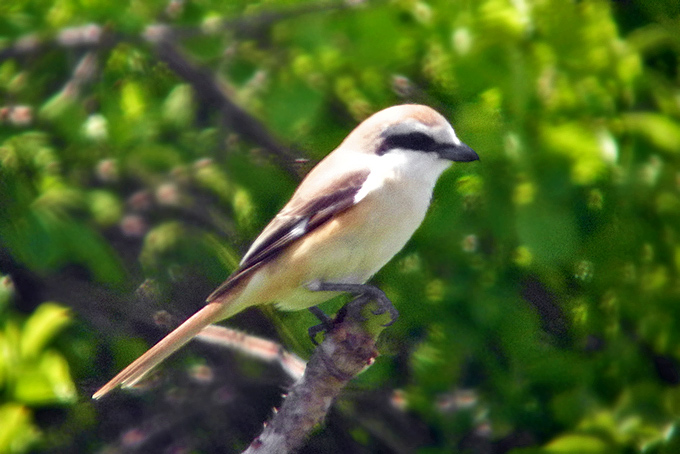 Brown Shrike Lanius cristatus with white-wing patch, May 21st, © Nial Moores
Brown Shrike Lanius cristatus with white-wing patch, May 21st, © Nial Moores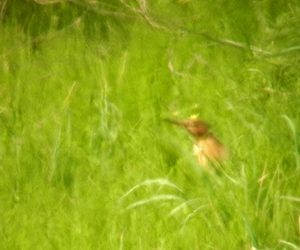 Cinnamon Bittern Ixobrychus cinnamomeus, © Nial Moores
Cinnamon Bittern Ixobrychus cinnamomeus, © Nial MooresBlack-necked Grebe Podiceps nigricollis. One in near-complete breeding plumage on 19th.
Eurasian Bittern Botaurus stellaris. One present and "booming" throughout the period.
Von Schrenck's Bittern Ixobrychus eurhythmus. Singles found on single dates in three different areas of the island and two were present in the main marsh eg on 26th (NM & RN).
Cinnamon BitternIxobrychus cinnamomeus. An adult male was seen briefly and record-digiscoped in the southwest on 22nd (NM & MP).
Purple Heron Ardea purpurea. One on 16th (NM); minimum of two (and up to six) on 20th; and one on 24th (last NM & MP).
 Purple Heron Ardea purpurea, © Matt Poll
Purple Heron Ardea purpurea, © Matt PollAmur Falcon Falco amurensis. One male (advanced second calendar-year?) on 17th; one second calendar-year male (or perhaps instead a second calendar-year maleRed-Footed Falcon F. verspertinus, as it showed heavily patterned underwing coverts, a narrow dark trailing edge and apparently darker central tail fathers) on 20th; one female on 21st; one on 22nd (MP only); and four or five on 23rd.
 Amur Falcon Falco amurensis, © Nial Moores
Amur Falcon Falco amurensis, © Nial MooresPied Harrier Circus melanoleucos. One female on 24th.
White-breasted Waterhen Amaurornis phoenicurus. At least two, with one in the west on the 18th and one in the southeast on 21st.
Ruddy-breasted Crake Porzana fusca. One in the west on 21st had been joined by a second bird on 22nd (NM & MP).
 Ruddy-breasted Crake Porzana fusca, © Matt Poll
Ruddy-breasted Crake Porzana fusca, © Matt PollBlack Drongo Dicrurus macrocercus. Two present in the souhwest on 17th were still present on 22nd (and perhaps had been joined by a third); two were in the northeast on 21st (where one was heard on 26th); and one was in the far southwest on 24th.
Asian Paradise Flycatcher Terpsiphone paradisi. An adult male was present and poorly-imaged in the west of the island on 22nd by NM and MP. It was not seen in the same area on 24th.
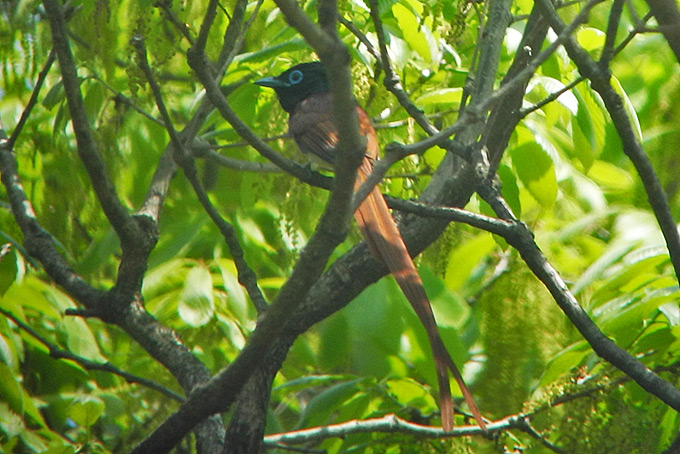 Asian Paradise Flycatcher Terpsiphone paradisi, © Nial Moores
Asian Paradise Flycatcher Terpsiphone paradisi, © Nial Moores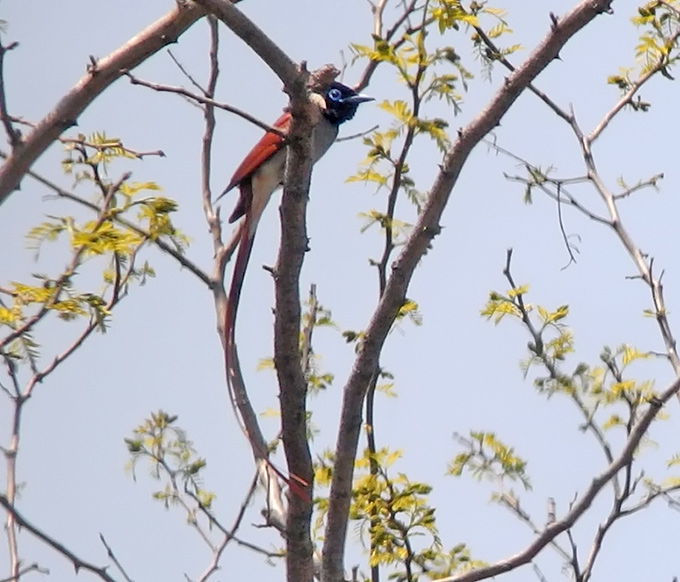 Asian Paradise Flycatcher Terpsiphone paradisi, © Nial Moores
Asian Paradise Flycatcher Terpsiphone paradisi, © Nial MooresBlack Paradise Flycatcher Terpsiphone atrocaudata. An adult male was well seen and poorly digiscoped in fog in the northeast on 20th and 21st.
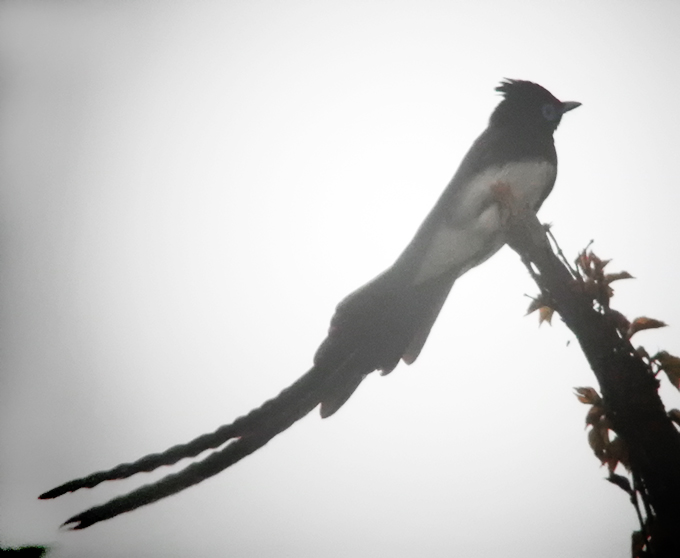 Black Paradise Flycatcher Terpsiphone atrocaudata, © Nial Moores
Black Paradise Flycatcher Terpsiphone atrocaudata, © Nial MooresLight-vented Bulbul Pycnonotus sinensis. Present, apparently in territory, and likely breeding in every village on the island - with a rough estimate of at least 15-25 pairs present during the week of survey.
Sand Martin Riparia riparia . Recorded daily with a peak of 40 on 21st. However, identification of most (all?) of these individuals now appears less than certain (see below). Of two birds perched on wires on 17th, one appeared a little larger, browner and darker than the other, and seemed to have closed primaries that fell short of the tail tip (all apparently supporting ID as Sand rather than as Pale Martin R. diluta).
Pale Martin Riparia diluta. At least one digiscoped on 17th in the main marsh and one also digiscoped on 26th in the north-east of the island (when sound recordings were also taken of some of the 5-10 brown-backed martins present on this latter date). Identification was based on recent ID criteria summarised and discussed in February 2013 by Dave Bakewell in a series of blogposts on birds in Malaysia and links provided from there (e.g: http://digdeep1962.wordpress.com/2013/02/19/riparia-martins-in-malaysia-what-are-they-part-3/). Key features supporting ID as Pale (presumably of subspecies fohkienensis) of the bird on the 17th (rather than as Sand Martin Riparia riparia ijimae) which are visible in images, include: 1) General paleness of the upperparts, and paler ear coverts than crown; 2) Clear grey wash to the breast band and the flanks; 3) Primaries of the closed wing extending clearly beyond the closed tail (said to fall more or less equal with or fall short of the tail in Sand Martin); and 4) presence of extensive tarsal feathering (just visible as a rough-edged white line on the left leg). The bird on the 26th showed a weak breast band (almost or actually broken in the centre) and also was considered (from images) to show some tarsal feathering above the main "tuft". Pale Martin is at present listed in Category 6 in the present version of the Birds Korea Checklist, while Sand Martin is listed in Category 1 and is generally considered to be a scarce migrant through the ROK. However, the actual status of both taxa in the ROK now seems rather less clear...
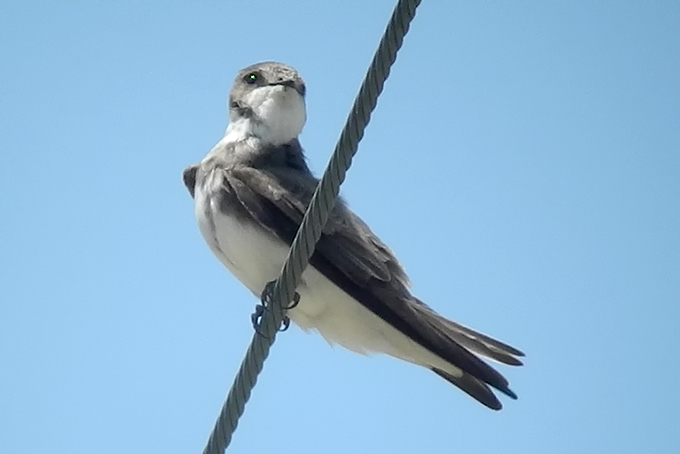 Pale Martin Riparia diluta, May 17th, © Nial Moores
Pale Martin Riparia diluta, May 17th, © Nial Moores Pale Martin Riparia diluta, May 17th, © Nial Moores
Pale Martin Riparia diluta, May 17th, © Nial Moores Pale Martin Riparia diluta, May 26th, © Nial Moores
Pale Martin Riparia diluta, May 26th, © Nial Moores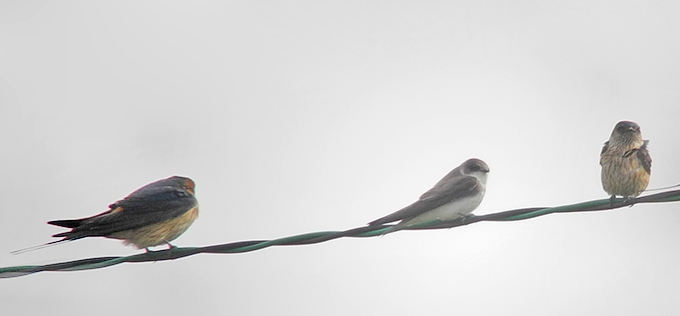 Pale Martin Riparia diluta (middle) with Red-rumped Swallow Cecropis daurica, May 26th, © Nial Moores
Pale Martin Riparia diluta (middle) with Red-rumped Swallow Cecropis daurica, May 26th, © Nial MooresCommon House Martin Delichon urbicum. One on 20th and at least seven together on 26th (NM & RN).
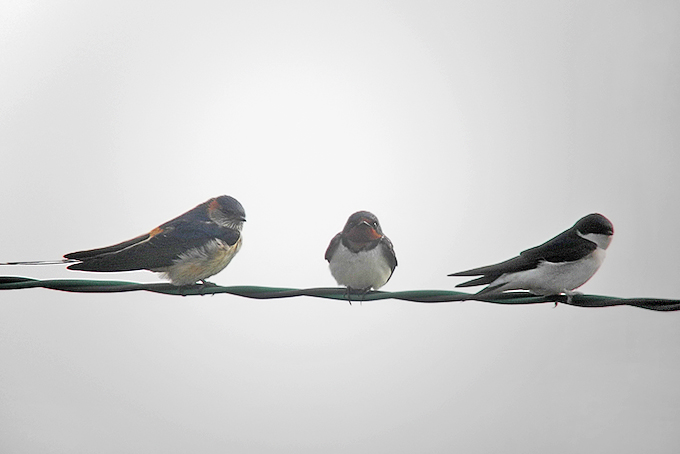 Common House Martin Delichon urbicum (right) with Barn Swallow Hirundo rustica (middle)
Common House Martin Delichon urbicum (right) with Barn Swallow Hirundo rustica (middle)
and Red-rumped Swallow Cecropis daurica (left), © Nial MooresAlpine Leaf Warbler Phylloscopus occisinensis. A recent IOC split from Tickell's Leaf Warbler. One was sound-recorded and seen poorly in the southwest on May 19th.
Japanese Leaf Warbler Phylloscopus xanthodryas. Two heard calling on May 24th (much deeper and more shrike-like than the 20 or so Arctic Warbler P. borealis and the two or so Kamchatka Leaf P. examinandus double-note callers heard the same day), when one or two were also well seen (showing strong yellow wash to the supercilium and yellowish tones to the breast and flanks, constrasting with a quite broad white wing-bar and paler belly).
Sakhalin Leaf Warbler Phylloscopus borealoides. One was heard singing (and perhaps faintly documented with a sound-recording) on 19th.
Red-breasted Flycatcher Ficedula parva. One heard (in direct comparison with two calling Taiga Flycatcher P. albicilla) was presumably the same as the bird poorly digi-scoped at the same spot immediately afterwards in the northeast on 20th (with images showing orange tones to the base of the lower mandible; warm tones to the "face"; and dark brown rather than blackish longest uppertail coverts - though all much faded and overexposed in the images).
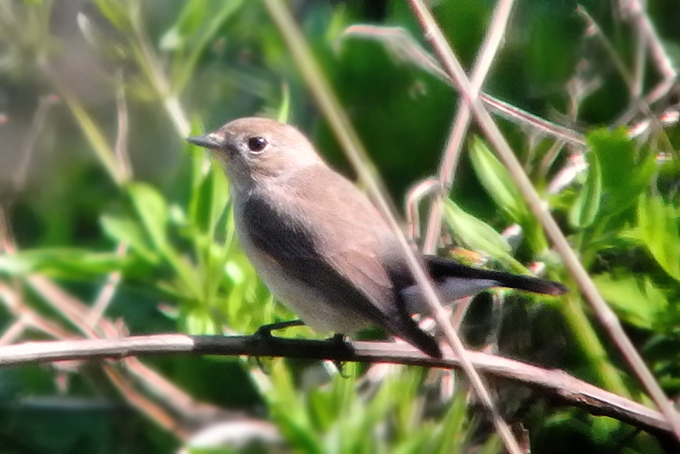 Red-breasted Flycatcher Ficedula parva, © Nial Moores
Red-breasted Flycatcher Ficedula parva, © Nial MooresSlaty-blue Flycatcher Ficedula tricolor. An adult male was seen very poorly in the wst of the island by NM and MP during the afternoon of the 21st. Seen poorly in flight twice from behind (NM) and side (MP) and once when perched in a bush (by NM only) . Identification was based on: 1) Small size and fairly short tail (recalling e.g. Red-breasted Flycatcher); 2) Clean, in parts "shiny", blue upperparts, recalling Red-flanked Bluetail, and white underparts; 3) Prominent white basal third to half of the otherwise blue-toned dark outer tail feathers; 4) Lack of dark throat; and 5) Dark, blue?, markings/suffusion on the breast sides when the bird was perched. Unfortunately the bird was extremely secretive and elusive and was also in a highly sensitive part of the island. There are no previous records in the ROK.
Russet Sparrow Passer rutilans. A male and female first found on the 19th were digi-scoped nest-building on 21st.
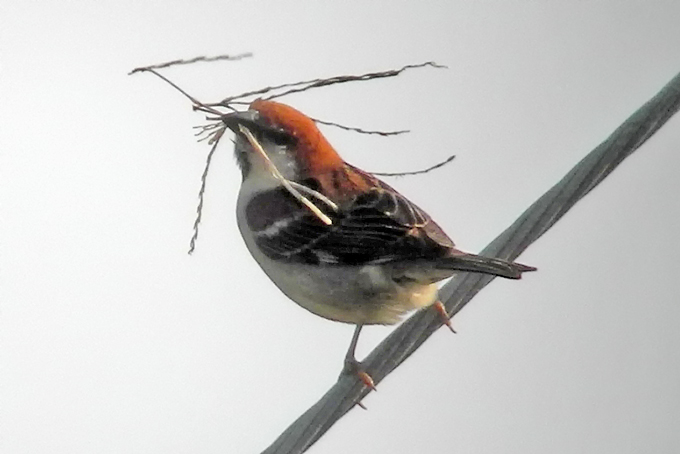 Male Russet Sparrow Passer rutilans, © Nial Moores
Male Russet Sparrow Passer rutilans, © Nial Moores Russet Sparrow Passer rutilans entering nesthole, © Nial MooresBird News from Robin Newlin
Russet Sparrow Passer rutilans entering nesthole, © Nial MooresBird News from Robin Newlin
Socheong Island, May 19 - 24From the boat, one flock of about 12 Northern Phalaropes before fog made viewing difficult. On Socheong, fog continued; the overall impression was that there were relatively few birds around. One male Taiga Flycatcher bathed in a stream, Nearby were an Asian Brown Flycatcher, a Streaked Flycatcher, a Brown Shrike, 3 Northern Hobbies, 2 Broad-billed Rollers and a Crested Honey Buzzard. A Northern Hawk Cuckoo sang invisibly. Several Cattle Egrets and one Intermediate Egret worked the grassy slope above the harbor. The path to North Point held 2 Eye-browed Thrushes, some overhead Siskins, and a few Yellow-browed, Dusky and Radde’s Warblers.
May 20:
Fog very heavy in the morning. In the village, one tree held 2 Daurian and 1 Red-billed Starling and 2 Chinese Grosbeak. On the outskirts, a Yellow-rumped Flycatcher and an Arctic Warbler. At North Point, my first locustella for some years: a Lanceolated Warbler.Also, very small numbers of the following: Meadow Bunting, Chestnut-eared Bunting, Yellow-browed Bunting, Black-faced Bunting, Hawfinch, Siberian Blue Robin, Japanese Sparrowhawk, Chinese Sparrowhawk, Richard’s Pipit, Little Bunting, Chestnut Bunting, Peregrine Falcon.
May 21:
Continued heavy fog with sunny patches in the afternoon. A Citrine Wagtail shared the rocky village cove with a Yellow Wagtail. Afternoon saw a slow increase in variety/”quality” but not numbers - the following were all single birds: Grey Thrush, Siberian Thrush, Grey-backed Thrush, Black-browed Reed Warbler, Thick-billed Warbler, Pallas’s Grasshopper Warbler, Pale-legged Leaf Warbler, Siberian Rubythroat, White-throated Rockthrush, Chinese Pond Heron, Forest Wagtail, Brambling.May 22:
Northerly winds on the morning meant few new birds—highlights were a female Mugimaki Flycatcher, a Dark-sided Flycatcher, several Pallas’ Grasshopper Warblers, a second Thick-billed Warbler (i.e. now a pair), a few Black-browed Reed Warblers, 2 Chestnut-eared Buntings, a cracking Yellow-breasted Bunting and a Pechora Pipit. Little, Oriental, Common and Northern Hawk Cuckoos called and a few showed. One Black Drongo made a brief appearance near the main village, and 2 Chinese Pond Herons shared a field with several Arctic, Dusky and Radde’s Warblers. Depressing talk with some men surveying the pretty dirt-and-gravel road out to North Point: apparently a hardtop road is in the works, even though their headman agreed that the present road is nicer.May 23:
More fog. A Striated Heron on the way to North Point. On the grassy slope of the headland, a brief flight view of an apparent Asian Koel. Fog grew heavier as the day continued. A Black-naped Oriole, a (female) Narcissus Flycatcher and an Ashy Minivet were the only new additions.May 24:
Again fog, again cancelled boats. North Point in the early morning yielded very few birds: Blue Rock Thrush, handsome Meadow Buntings and the continuing Eye-browed Thrushes. Later in the morning and early afternoon, a circuit of a very silent North Point-Back Trail yielded a couple of (probable) Gray’s Grasshopper Warblers, a Dusky Warbler, a Tricolored Flycatcher, several Arctic Warblers and a Eurasian Jay.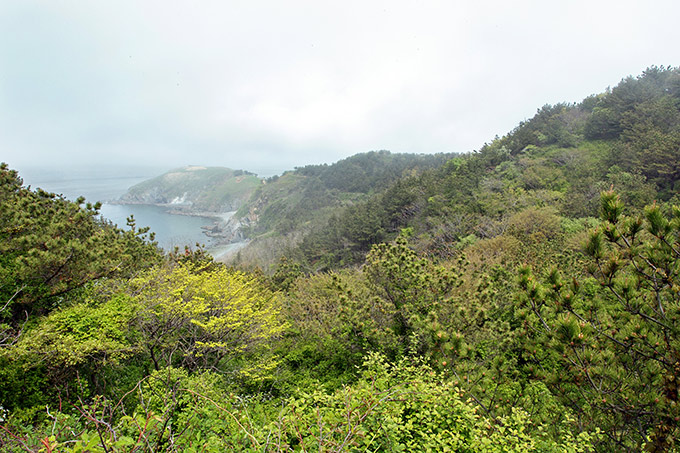 Socheong, © Robin Newlin
Socheong, © Robin Newlin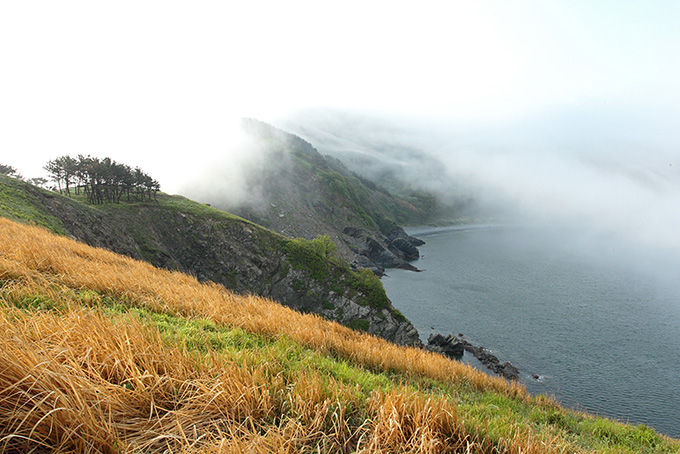 Socheong, © Robin Newlin
Socheong, © Robin Newlin Peregrine Falcon Falco peregrinus, © Robin Newlin
Peregrine Falcon Falco peregrinus, © Robin Newlin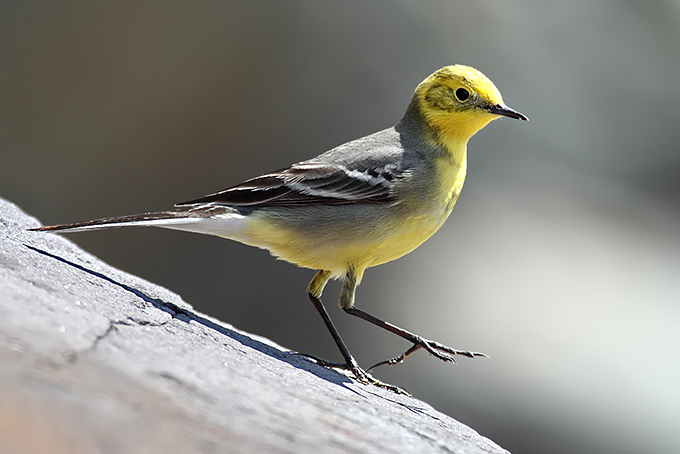 Citrine Wagtail Motacilla citreola, © Robin Newlin
Citrine Wagtail Motacilla citreola, © Robin Newlin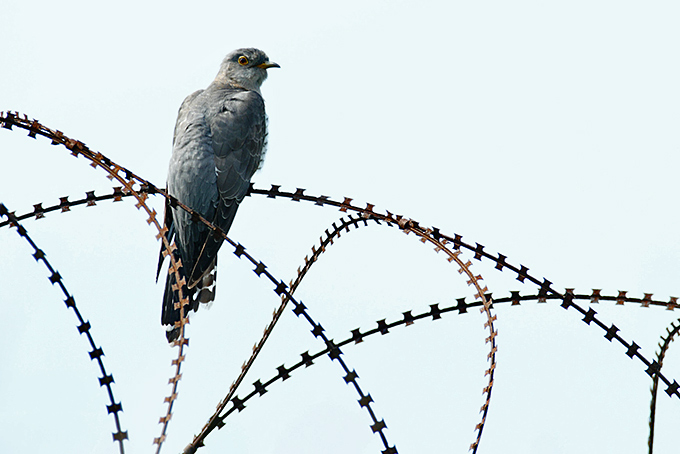 Common Cuckoo Cuculus canorus, © Robin Newlin
Common Cuckoo Cuculus canorus, © Robin Newlin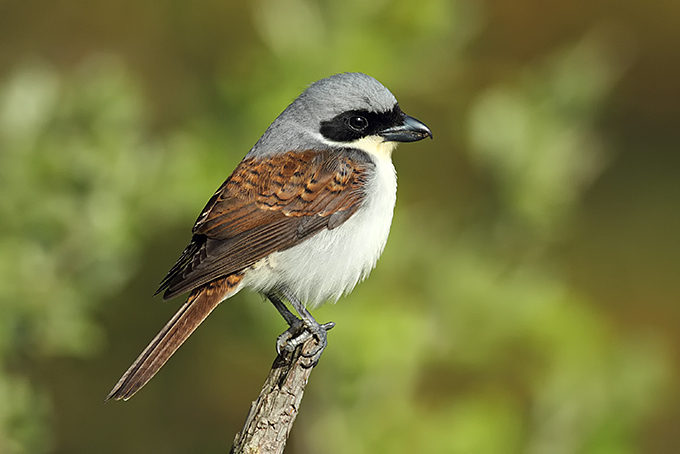 Tiger Shrike Lanius tigrinus, © Robin NewlinBird News from Yoli Park
Tiger Shrike Lanius tigrinus, © Robin NewlinBird News from Yoli Park
Busan, May 13 – 22Two birders from Japan told me that they couldn’t make it this year to Busan, so I volunteered to go in their place in May. For nearly two weeks I stayed at Taejongdae, getting up at 4:30am each morning, and hiking to the watch point at the Observation Deck on the southernmost tip of the island of Yeongdo-gu. Along the way, I could hear an Oriental Turtle Dove, Eastern Great Tit and the lazy cry of a Large-billed Crow. I get to the watch point, and begin as soon as I get there to keep an eye out for Oriental Honey Buzzards, the target of my study. The mission was to record all the ones I see for those (almost) two weeks in order to gather data for the Asian Raptor Research & Conservation Network (ARRCN). Each day I would record the raptors I had seen, how many, at what time, as well as the weather conditions: temperature, wind speed, pressure, and cloud cover. My results can be seen at: http://www5b.biglobe.ne.jp/~raptor/Korea2013spring.html.
Other birds that I would see while buzzard watching were: Black-naped Oriole, Osprey, Brown-eared Bulbul, Eurasian Magpie, Pygmy Woodpecker, Vinous-throated Parrotbill, Daurian Redstart, Black-tailed Gull, Oriental Dollarbird, Blue Rock Thrush, Barn Swallow, Japanese Bush Warbler, Eurasian Jay, and Arctic Warbler. There was also a possibly mated pair of Peregrines and Black Kites.
For the final three days, while walking on the path to head back after I was finished at around 11:30am, I wondered why there were two men staring intently at the foliage scattered on a wall, with cameras. At one time, one of the men actually climbed up the slope a little and peered closely. Obviously there was something interesting going on, but I could never tell what it was. Until the last day, when they now had a camera with a telephoto lens, up on the slope, a foot away from a log (totally missing the point of what that kind of lens is for), with two more cameras that they held pointed at that fixed point. I saw now, that they had been and were photographing a two adult, three chick, Japanese White-eye family. The adults were trying to feed their chicks, but it was unfortunately and painfully obvious that they were not happy with the presence of strangers and their equipment watching them so closely. I was frustrated and helpless.
I don’t know the outcome of that bird family and those…photographers. I just hope the chicks got fed well, grew up quickly, and got out of there as soon as they could.
Bird News from Jason Loghry with Lee Ki-Su
Goeje, May 17The morning sky was partly cloudy as we headed for the small island of Maemul-do, off of Goeje. As we grew closer to the island, 10 Pacific Loon passed us in flight, giving only brief views. Our attention was then drawn to the sky as 12 large raptors soared above us. At first, I presumed these raptors were Black Kites, but a closer look revealed they were Crested Honey Buzzard. It was exciting, and this was the first time I had seen so many together. Although the boat was rocky, it was spectacular to be able to see them at close range.
On the island, the wind was strong. The habitat looked fantastic, but there were few birds to be seen. By this time, the sky was clear. There were several broadleaf hardwood trees (Machilus thunbergii) present on the island, but we were unable to find any Black Woodpigeon. Species observed on Maemul-do include Oriental Reed Warbler, Korean Bush Warbler, Japanese Bush Warbler, Meadow Bunting ( including several singing), Brown-eared Bulbul, Eurasian Magpie, Eastern Great Tit, Barn Swallow, Pacific Swift, and the dozens of Crested Honey Buzzard soaring from island to island, appearing to be on a migration route.
At noon we took a boat to the neighbouring island of Somaemul-do. There were hundreds of tourists visiting the island and the habitat was more disturbed than at the now seemingly quiet Maemul-do. We were still able to see a few birds, including a female Blue and White Flycatcher, Common Cuckoo, Pale Thrush, Brown-eared Bulbul, and several Japanese Bush Warbler singing. The most impressive observations made were of the Crested Honey Buzzards, most of them seen in the morning hours, with a total of 72 for the day.
Bird News from Robin Newlin
Weiyon Island, May 7 - 15First off the boat on the 7th, the island seemed pretty birdy (also many many bird photographers). A list to augment (before and after) Tim Edelsten’s.
One Bluethroat in the pond. Also in the pond, several Red-throated Pipits, a few Pallas’ Reed Buntings, a Black-winged Stilt, a Long-toed Stint, 2 Marsh Sandpipers, 2 Wood Sandpipers. and (for brief interludes) a White-bellied Waterhen. The Orange-headed Thrush discovered and photographed by Dr. Nial Moores was still present and much visited by many pilgrims.
Near the (other) temple, one White's Thrush and several Pale Thrushes.
A Chinese Nuthatch (May 8) and a Northern Hawk Cuckoo (the latter mostly heard only) made for an interesting juxtaposition.
Much anticipated rain was followed by heavy fog: and very small numbers of new arrivals. A Long-tailed Shrike appeared to be fresh in on a slope near the ocean: the bird worked its way toward town and pond during the next several days.
A Curlew Sandpiper appeared first on harbor concrete and then near the vegetable garden puddles, where it feasted on enormous earthworms.
As on Gageo, encouraging numbers of Siskins. A small flock of Bramblings.
Also: one Forest Wagtail, small numbers of Mugimaki, Narcissus, Yellow-rumped, Streaked, and Brown Flycatchers.
Good numbers (c. 25) of Rufous-tailed Robin.
The same for Tristram’s Bunting and (to a lesser degree: maybe 10) Yellow-browed Bunting. Woodpecker holes in the old trees near the temple presaged 2 Greater Spotted Woodpeckers.
Very few Chestnut Buntings. A small flock of Little Buntings.
During the slow days of alternating fog and sun, a few additions, e.g. a cracking Yellow Bittern, a crackinger Common Kingfisher, several Chinese Grosbeak and 2 Hawfinches. Some raptor movement as described by T.E.
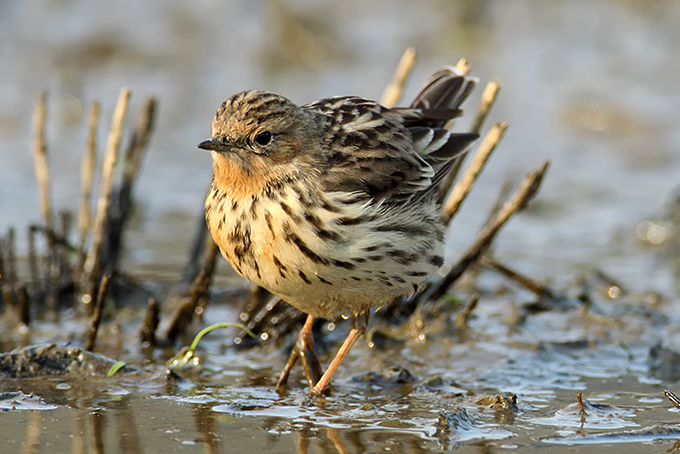 Red-throated Pipit Anthus cervinus, © Robin Newlin
Red-throated Pipit Anthus cervinus, © Robin Newlin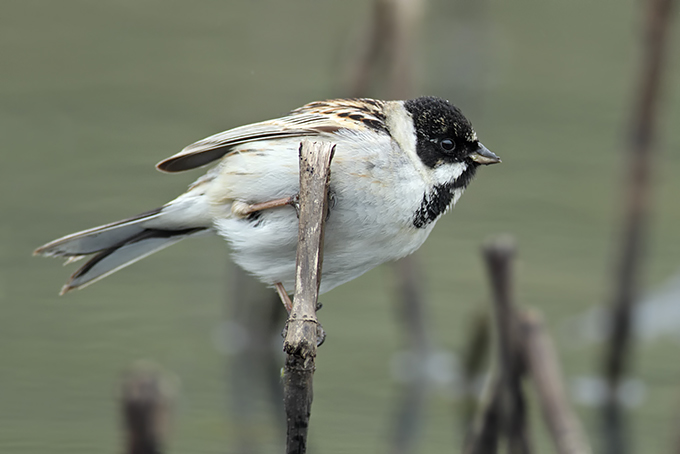 Male Pallas’s Reed Bunting Emberiza pallasi, © Robin Newlin
Male Pallas’s Reed Bunting Emberiza pallasi, © Robin Newlin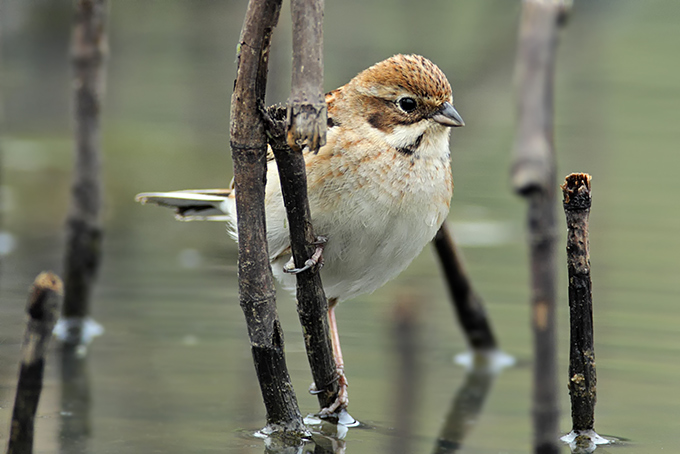 Female Pallas’s Reed Bunting Emberiza pallasi, © Robin Newlin
Female Pallas’s Reed Bunting Emberiza pallasi, © Robin Newlin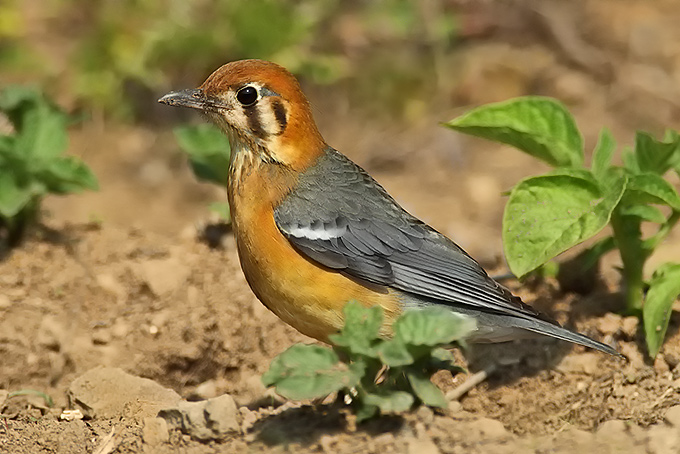 Orange-headed Thrush Geokichla citrina, © Robin Newlin
Orange-headed Thrush Geokichla citrina, © Robin Newlin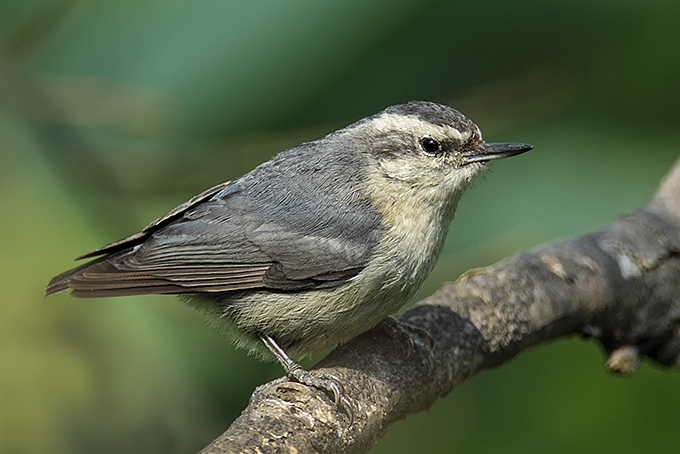 Chinese Nuthatch Sitta villosa, © Robin Newlin
Chinese Nuthatch Sitta villosa, © Robin Newlin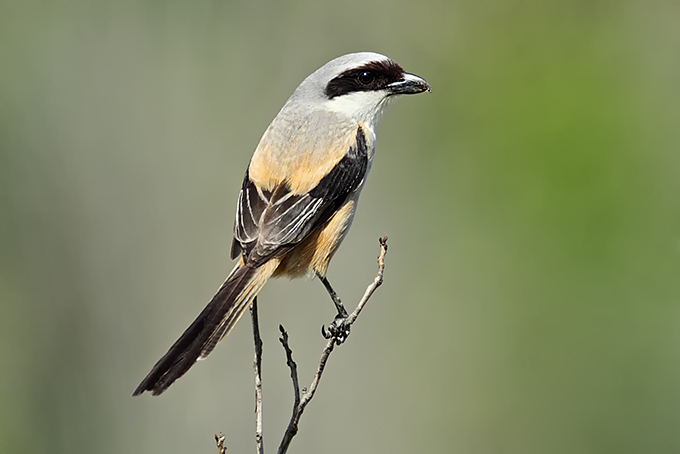 Long-tailed Shrike Lanius schach, © Robin Newlin
Long-tailed Shrike Lanius schach, © Robin Newlin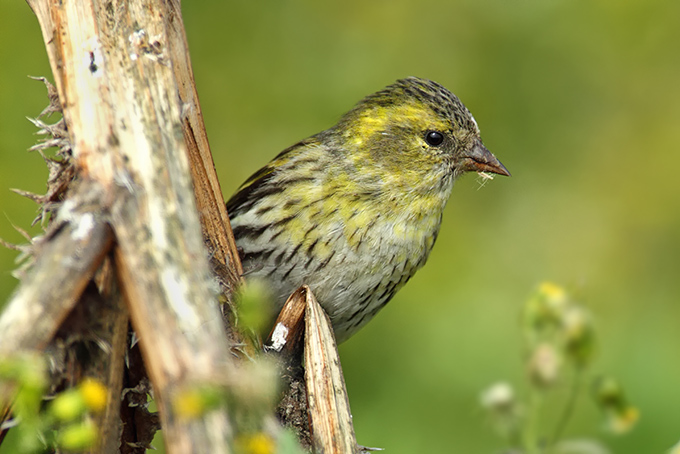 Eurasian Siskin Carduelis spinus, © Robin Newlin
Eurasian Siskin Carduelis spinus, © Robin Newlin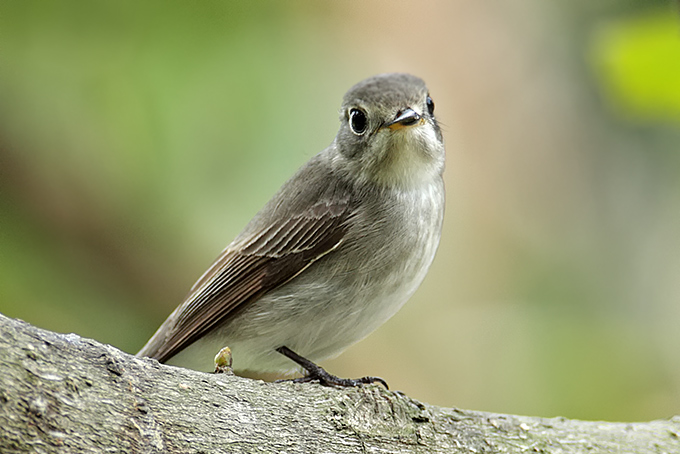 Asian Brown Flycatcher Muscicapa latirostris, © Robin Newlin
Asian Brown Flycatcher Muscicapa latirostris, © Robin Newlin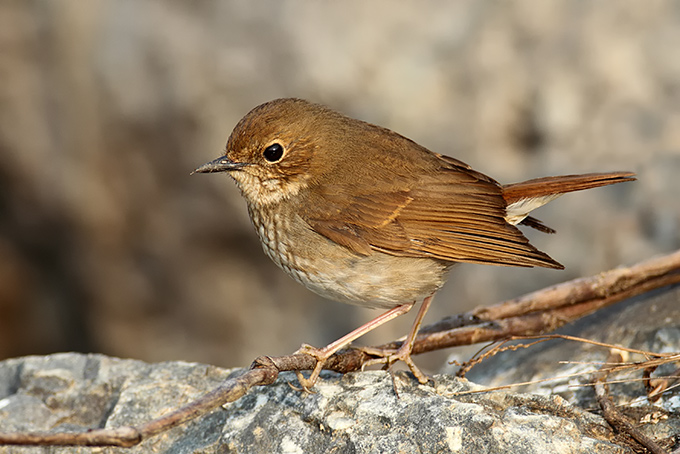 Rufous-tailed Robin Luscinia sibilans, © Robin Newlin
Rufous-tailed Robin Luscinia sibilans, © Robin Newlin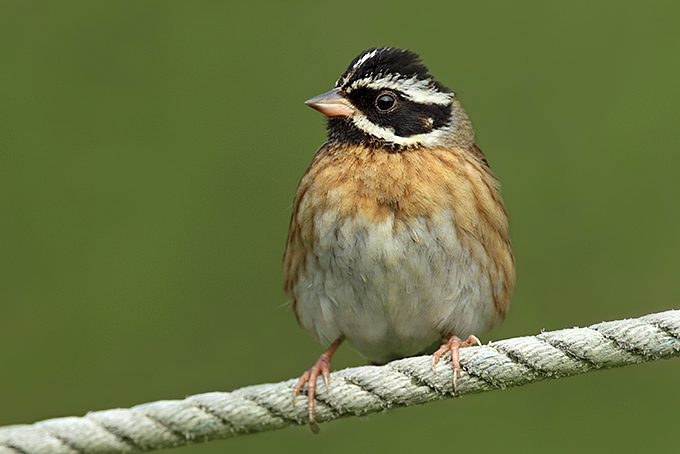 Tristram's Bunting Emberiza tristrami, © Robin NewlinBird News from Tim Edelsten
Tristram's Bunting Emberiza tristrami, © Robin NewlinBird News from Tim Edelsten
Weiyon Island, May 13 - 15In 48 hours on the Island (also at times accompanied by Robin Newlin) I recorded 78 species, including one or two especially interesting finds. Weather was dry, clear and sunny, with south-westerly winds-allowing for some visible migration viewed from the mountaintop on the 14th, followed by fog and fine rain through the morning of the 15th. This island is unfortunately patrolled by several well-nourished domestic cats.
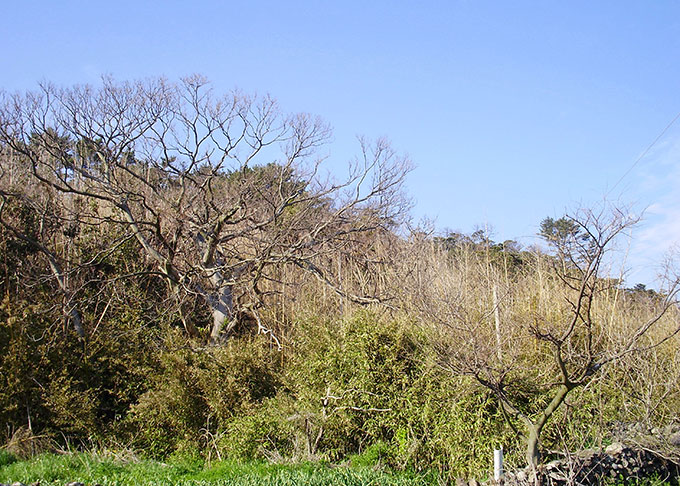 Weiyon Island: South-facing bamboo interspersed with Japanese Camellia and Japanese Black Pine, Photo © Tim Edelsten
Weiyon Island: South-facing bamboo interspersed with Japanese Camellia and Japanese Black Pine, Photo © Tim EdelstenNight Heron Gorsachius spp. An individual flushed at very close quarters on the 13th showed characteristics shared by both Japanese G.goisagi and Malayan Night Heron G.melanolophus. Immediately striking was an extensive, bright sky-blue cere and bare parts around the eye, and in flight, thick and solid dark bars (not streaking or vermiculations) on the whitish-looking side of the body (- all features usually not or scarcely shown by Japanese?). It also posessed a dark crown that contrasted fairly noticeably with the rest of the head. Although extremely wary, and very unfortunately, not photographed due to its flight through trees and branches, it was subsequently briefly glimpsed twice, darting out of view along the shady trails through thick forest and bamboo. However, neither nuchal crest nor white-spotting on the upperwing were particularly noticable (if present), which perhaps points identification away from Malayan. I would welcome opinions as to its identity from observers experienced in both species. Does Japanese ever show thick barring?
Black-crowned Night-Heron Nycticorax nycticorax. Two circling overhead at dusk.
Chinese Pond Heron Ardeola bacchus. One frequenting the pond area.
Eastern Cattle Egret Bubulcus coromandus. One on the 13th and two the next day.
Intermediate Egret Egretta intermedia. One arrived with the fog on the 15th.
Little Egret Egretta garzetta garzetta. One on the 14th.
Pelagic Shag Phalacrocorax pelagicus. Several offshore.
Temminck's Cormorant Phalacrocorax capillatus. Four or five offshore.
Crested Honey Buzzard Pernis ptilorhyncus. One on the 14th.
Chinese Sparrowhawk Accipiter soloensis. Three headed east on the 14th, high overhead.
Japanese Lesser Sparrowhawk Accipiter gularis. One male on the 14th, (mobbed by swallows).
Eurasian Sparrowhawk Accipiter nisus. Two passing overhead on the 14th.
Grey-faced Buzzard Butastur indicus. One on the 14th.
Peregrine Falco peregrinus. Two adults with a juvenile, doing the talon-grasping cartwheeling on the 14th.
Pintail Snipe Gallinago stenura. One on the 14th.
Wood Sandpiper Tringa glareola. One at the pond daily.
Common Sandpiper Actitis hypoleucos. One in the bay.
Black-tailed Gull Larus crassirostris. Numerous.
Mongolian Gull Larus mongolicus. Two 2CY individuals in the harbour.
Rufous Turtle Dove Streptopelia orientalis. Two or three seen.
Rufous Hawk-Cuckoo Hierococcyx hyperythrus. One calling on the 14th.
Lesser Cuckoo Cuculus poliocephalus. Two, seen and also heard singing.
Oriental Cuckoo Cuculus optatus. One singing.
Common Cuckoo Cuculus canorus. One calling.
Oriental Scops Owl Otus sunia. Heard in late afternnoon.
Brown Hawk Owl Ninox scutulata. One calling at dusk on the 14th.
White-throated Needle-tailed Swift. Hirundapus caudacutus. A pair over the mountain on the 14th.
Pacific Swift Apus pacificus. Approx 50 gliding into headwind on the 14th.
Oriental Dollarbird. Eurystomus orientalis. Three high overhead in gliding, undulating flight on the 14th.
Great Spotted Woodpecker Dendrocopos major One in the vicinity of the temple, active on trunks of Japanese Camellia Camellia japonica trees.
Ashy Minivet Pericrocotus divaricatus One on the 14th.
Tiger Shrike Lanius tigrinus. One on the 13th.
Bull-headed Shrike Lanius bucephalus. A male and a female present every day.
Brown Shrike Lanius cristatus One confusus seen daily.
Long-tailed Shrike Lanius schach. One noticed hunting from a perch on the 13th and 14th, when seen to pounce on, kill, and later eat a Siskin. A second such victim was found impaled on a branch nearby.
Black-naped Oriole Oriolus chinensis. One on the 13th and 14th.
Eurasian Jay Garrulus glandarius. Heard several times on the 13th.
Eastern Great Tit Parus minor. Apparently two or three pairs breeding near the village.
Light-vented Bulbul Pycnonotus sinensis One heard on the 13th.
Brown-eared Bulbul Microscelis amaurotis. Several pairs on the Island.
Sand Martin Riparia riparia A "pure" flock of up to twelve individuals hurried east on the 14th.
Barn Swallow Hirundo rustica. Present daily, with c. 40 on the 14th.
Asian House Martin Delichon dasypus One on the 14th.
Red-rumped Swallow Cecropis daurica. Four or five seen daily.
Japanese Bush Warbler Horornis diphone. A fair number either heard singing or alarm-calling every day, evenly distributed throughout the island and apparently holding territory.
Manchurian (Korean) Bush Warbler Horornis borealis. One or two heard singing on the 14th.
Dusky Warbler Phylloscopus fuscatus. Several heard or seen daily.
Yellow-browed Warbler Phylloscopus inornatus. Only between one and three seen or heard.
Eastern Crowned Warbler Phylloscopus coronatus. One on the 14th.
Pale Thrush Turdus pallidus. Several seen or heard each day, including a pair apparently co-operatively hunting insects together.
Naummann's Thrush Turdus naumanni. One on the 14th.
Rufous-tailed Robin Luscinia sibilans. Two or three heard singing daily.
Red-flanked Bluetail Tarsiger cyanurus. A female on the 14th.
Stejneger's Stonechat Saxicola stejnegeri. A male and a female seen.
Blue Rock Thrush Monticola solitarius One singing in the harbour.
White-throated Rock Thrush Monticola gularis. One on the 14th.
Grey-streaked Flycatcher Muscicapa griseisticta. One the sunny afternoon of the 14th I saw at least 30 on the island, most of them accumulated along the mountaintop.
Dark-sided Flycatcher Muscicapa sibirica. One on the 14th.
Asian Brown Flycatcher Muscicapa dauurica Five or six on the 14th.
Narcissus Flycatcher Ficedula narcissina. A male, then a female departing the mountaintop on the 14th.
Mugimaki Flycatcher Ficedula mugimaki. A handful of females on the 13th and 14th.
Blue-and-white Flycatcher Cyanoptila cyanomelana. One on the 13th, three on the 14th (males).
Eastern Yellow Wagtail Motacilla tschutschensis. One taivana on the 13th and one tschutschensis on the 14th.
Grey Wagtail Motacilla cinerea. One at the pond daily.
Richard's Pipit Anthus richardi. One seen daily.
Olive-backed Pipit Anthus hodgsoni. Four on the 13th, two on the 14th.
Red-throated Pipit Anthus cervinus. One on the 13th.
Brambling Fringilla montifringilla. Ten or less seen daily.
Grey-capped Greenfinch Carduelis sinica. Two heard on the 13th and 14th.
Siskin Carduelis spinus. A roving flock of ten or so had apparently been gradually reduced by the depredations of the neighborhood Long-tailed Shrike.
Chinese Grosbeak Eophona migratoria. One male singing on the 14th.
Tristram's Bunting Emberiza tristrami. One or two seen daily.
Chestnut-eared Bunting Emberiza fucata. One on the 13th.
Little Bunting Emberiza pusilla. Seven or eight seen daily
Yellow-browed Bunting Emberiza chrysophrys. One or two seen each day.
Chestnut Bunting Emberiza rutila. Only three ( a male and two females) seen throughout the trip.
Black-faced Bunting Emberiza spodocephala. Numerous, with some 40-60 seen daily.
- Oriental Pratincole: 2 long: staying in the quarry.
- Little Whimbrel: one flyby and one for a few days in the quarry.
- Oriental Plover: one for a day in the quarry.
- Taivana Yellow Wagtail: particularly good numbers: at least 8 noted throughout the island.
- Greater Short- toed Lark: a couple near the trash tip, one with a distinctly small fine bill.
- Siberian Rubythroat: several noted throughout.
- Mugimaki, Narcissus, Yellow-rumped, Streaked, Brown, Blue-and-White and Taiga Flycatchers: is there better reason for being on a West- sea island in the spring?
- Long-tailed Tit: unusual on the island?
- Yellow-bellied Tit: no longer unusual in Korea?
- White-bellied Waterhen: 2 individuals noted.
- Black Wood Pigeon: one heard: almost as good as seeing them.
- Grey-headed Lapwings: 2 made regular flights above the quarry, around “Little Hokkaido” and above the village.
- Pechora Pipit: a couple noted.
- Richard’s Pipit and Red-throated Pipits as well: the latter encouragingly numerous.
- Yellow-breasted Bunting: only one.
- Few Yellow-browed, Eastern-crowned, and Pale-legged Leaf Warblers.
- Common Redshank: lurking near the trash tip.
- One Common Kingfisher.
- One Black-capped Kingfisher.
- Curlew Sandpiper: owning the mossy slab.
- Bar-tailed Godwit and Sharp-tailed Sandpiper on the slab for the 1st day or so.
- A crake: possibly a Band-bellied: flushed from a village: roof: garden patch.
- Along those lines, a Baillon’s Crake in the concreted stream.
- Encouraging numbers of Eurasian Siskins.
- About 30 Ancient Murrelets. Distant: no clear Cresteds.
- Streaked Shearwater: 3.
- Swinhoe’s Storm Petrel: 1. Early?
- An apparent Daurian Redstart (male) fluttering over the busteious brine.
Black-faced Spoonbill Platalea minor. At least 70 were present at Song Do colony on April 27th, despite ongoing reclamation of the last viable area of tidal-flat there.
Purple Heron Ardea purpurea. One overflew Weiyeon on April 29th.
Chinese Egret Egretta eulophotes. Three at Boryeong Tidal-flat on May 2nd and 3rd.
Eastern Marsh Harrier Circus spilonotus. A male was over reed-beds at the Han-Imjin Estuary on May 4th.
Grey-headed Lapwing Vanellus cinereus. On Weiyeon, a non-breeding plumaged bird (second calendar year?) on April 28th was followed by a full breeding plumaged adult on 29th.
Latham’s Snipe Gallinago hardwickii . Recorded daily on Weiyeon between April 29th and May 1st, with at least four on 29th the highest day count (a day with 40 other snipe of three other species also on the island…).
Asian Dowitcher Limnodromus semipalmatus. A breeding plumaged bird was at the Geum Estuary on April 28th.
Nordmann’s Greenshank Tringa guttifer. Seen at three different roosts on the mainland at the Geum Estuary, with one on 28th; 2 or 3 on May 1st; and at least two on May 2nd.
Great Knot Calidris tenuirostris. At least 4,600 were at two mainland roosts at the Geum Estuary on May 2nd.
Gull sp. An extremely odd-looking gull, considered to show several features of both Black-headed Chroicocephalus ridibundus and Slender-billed Gull Chroicocephalus genei (latter only one previous national record) was seen briefly at Boryeong tidal-flat on May 2nd and was probably still there (though mostly very distantly) on the 3rd. The lack of an obviously bi-colored eye; the shortness of the tail; and the darkness of the bill seemed anomalous on a bird showing only one ear spot with an exceptionally long and slender bill and small eye. Perhaps the bird’s singular appearance might perhaps be best explained by some hybrid influence (e.g. between Slender-billed Gull and Black-headed Gull?)? Comments welcome!
Black Woodpecker Dryocopus martius. Superb views were enjoyed of a pair chasing off Red Squirrels from their nest hole near the arboretum on May 4th.
Black-browed Reed Warbler Acrocephalus bistrigiceps. One heard singing on April 29th on Weiyeon (NM only) is considered exceptionally early.
Chinese Nuthatch Sitta villosa. One (or two) near the Geum Barrage on April 28th and one (or two) on Weiyeon Island on May 1st would be considered extraordinary in any other year!
White-shouldered Starling Sturnia sinensis. One briefly on Weiyeon Island on April 29th (NM only).
Orange-headed Thrush Geokichla citrina. One male fed briefly on the school playing ground on Weiyeon in fog and light rain on April 29th. This is believed to be the third national record.
Verditer Flycatcher Eumyias thalassinus. On April 30th, an adult male seen by NM only moved from field to field, perching on nets and fence-posts, unfortunately passing by several photographers apparently unnoticed.
Citrine Wagtail Motacilla citreola. One, then two adult males, present on Weiyeon daily.
Pechora Pipit Anthus gustavi. A small menzbieri-type Pechora tried to find shelter under the same covered area we were taking shelter in during the rainstorm on 29th, with another heard in a different part of Weiyeon Island the same day. On May 4th, one gustavi-type seen and heard in Pocheon (Gyeonggi Province) is an unusual inland record.
Red-throated Pipit Anthus cervinus. At least 15 were grounded on Weiyeon on April 30th and May 1st – a decent count for a small offshore island.
Brambling Fringilla montifringilla. Recorded daily on Weiyeon, with a peak of 200 on April 29th and several fresh-in birds most days.
Hawfinch Coccothraustes coccothraustes, Typically rare in May, but recorded daily, with 25 seen on May 4th (including one flock of 15 in Cheorwon).
Eurasian Siskin Carduelis spinus. Recorded daily, with an estimated 110 on April 30th being the maximum day count. On Weiyeon, many appeared exhausted (one even falling asleep as it fed) and we saw one killed by a cat.
Tristram’s Bunting Emberiza tristrami. Recorded daily, including on the mainland, with highest day counts of 30+ on April 29th on Weiyeon. Some on Weiyeon appeared exhausted and were highly approachable – with one such bird killed by a cat.
Yellow-browed Bunting Emberiza chrysophrys. Recorded almost daily with high counts of 60 at Yeongjong on April 27th and 30+ on Weiyeon Island on April 29th.
Yellow-breasted Bunting Emberiza aureola. Maximum of only two, on Weiyeon Island on April 29th.
Yellow Bunting. Emberiza sulphurata. Only one recorded, on Weiyeon on April 29th.
Black-faced Bunting Emberiza spodocephala. Recorded daily, with a maximum of 350+ on Weiyeon on April 29th, decreasing to 250 on 30th. On April 28th and again on May 2nd, a personata was in song near the Geum barrage.
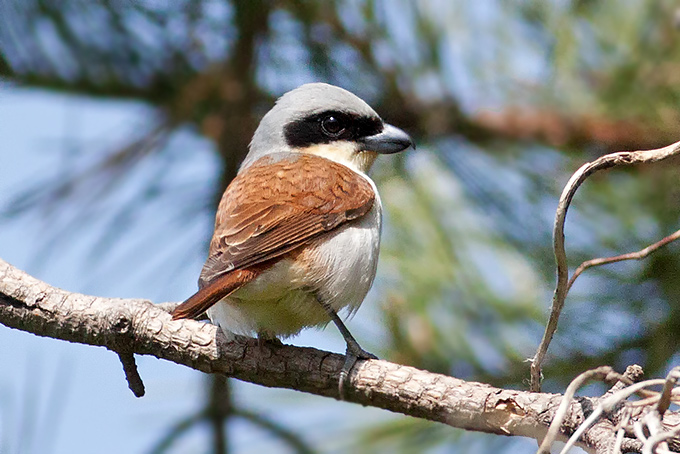 Tiger Shrike Lanius tigrinus, © Tim Edelsten
Tiger Shrike Lanius tigrinus, © Tim Edelsten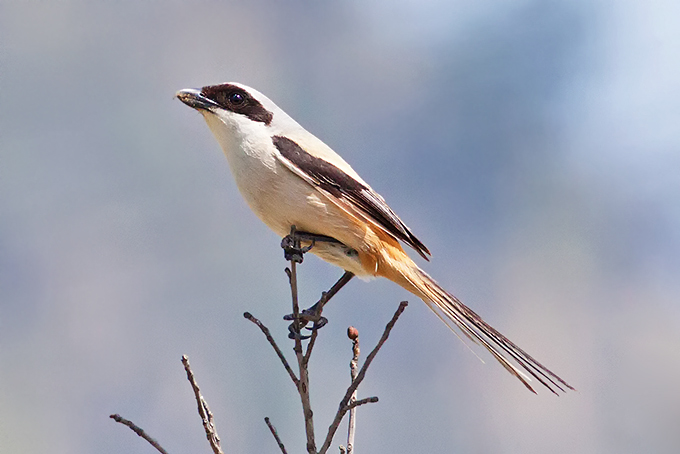 Long-tailed Shrike Lanius schach, © Tim Edelsten
Long-tailed Shrike Lanius schach, © Tim Edelsten Shrike larder: stored prey of Long-tailed Shrike, © Tim Edelsten
Shrike larder: stored prey of Long-tailed Shrike, © Tim Edelsten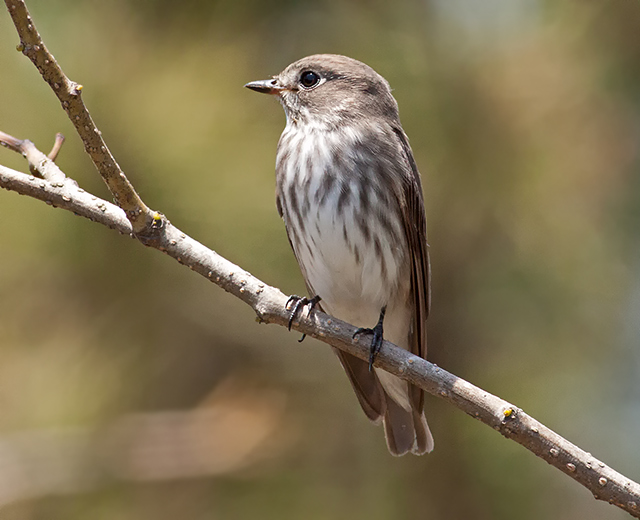 Grey-streaked Flycatcher Muscicapa griseisticta, © Tim EdelstenBird News from Nial Moores with Mark Harris (and Matt Poll on 13 and 14 dawn)
Grey-streaked Flycatcher Muscicapa griseisticta, © Tim EdelstenBird News from Nial Moores with Mark Harris (and Matt Poll on 13 and 14 dawn)
Various Sites, May 13 - 15Three days of great birding - at the Geum Estuary on May 13th; Yubu island at dawn on 14th, then the Geum Barrage, Boryeong and Shinji-Do (Taean) area on 14th; and Nami Seom and at Namyangju on the 15th. Weather was largely sunny and warm - peaking at 27C or thereabouts near Seoul on 15th.
In the Geum Estuary shorebird highlights among c. 50,000 shorebirds at Yubu and 10,000 shorebirds below the Geum baarrage on 14th inluded three Spoon-billed Sandpiper (one 2cy and two breeding-plumaged adults) at Yubu; ten Nordmann's Greenshank at Yubu and at least four at the Geum barrage (including one fully in non-breeding plumage); and a breeding-plumaged Asian Dowitcher at the barrage (considered different from the one in late April based on plumage). Although the shorebirds were only poorly-checked (because of light and time constraints) other species of note also included breeding-plumaged Curlew Sandpiper and Greater Sand Plover at Yubu. Other outstanding highlights at the Geum Estuary included on 13th prolonged views of a Eurasian Eagle-Owl and best of all an adult Saker Falcon (although showing strong moustachials, ID was made on massive structure in flight and when perched, including occasionally obvious shorter primaries than tail; pale forehead and supercilium; and striking contrast on the underwing - with almost unmarked secondaries and bases of primaries contrasting with dark axillaries and especially habvily-marked undering coverts).
On 14th, single Arctic Loons inshore both at Boryeong (where also two Chinese Egret - one giving superb views as it fed) and near Shinji Do (Taean), where also five or six Chinese Nuthatch, a second calendar-year Narcissus Flycatcher, a Eurasian Wryneck, a male Chestnut Bunting and several Tristram's Bunting among migrant landbirds there.
On 15th, highlights included excellent views of a singing Yellow-rumped Flycatcher (one of at least six in song there) and Ruddy Kingfisher glimpsed (MH only) and heard at Nami-Seom, while in Namyangju best were prolonged views of a stunning male Black Woodpecker.
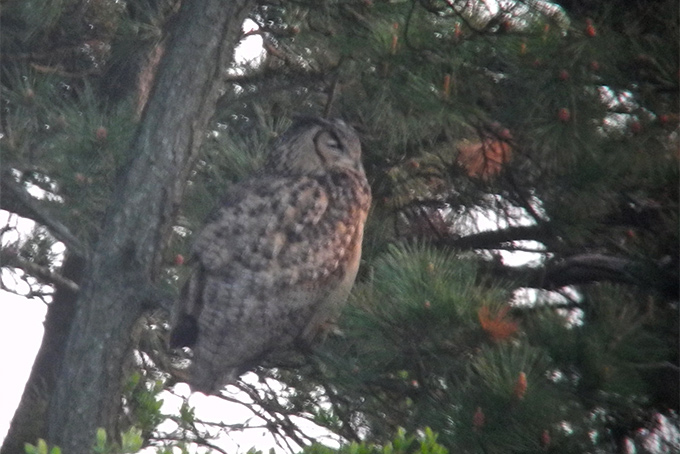 Eurasian Eagle-Owl Bubo bubo, Photo © Nial Moores
Eurasian Eagle-Owl Bubo bubo, Photo © Nial Moores Saker Falcon Falco cherrug, Photo © Nial Moores
Saker Falcon Falco cherrug, Photo © Nial Moores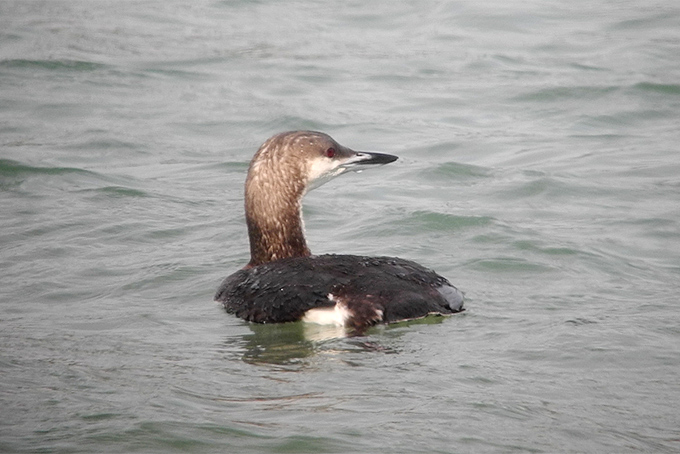 Arctic Loon Gavia arctica, Photo © Nial Moores
Arctic Loon Gavia arctica, Photo © Nial Moores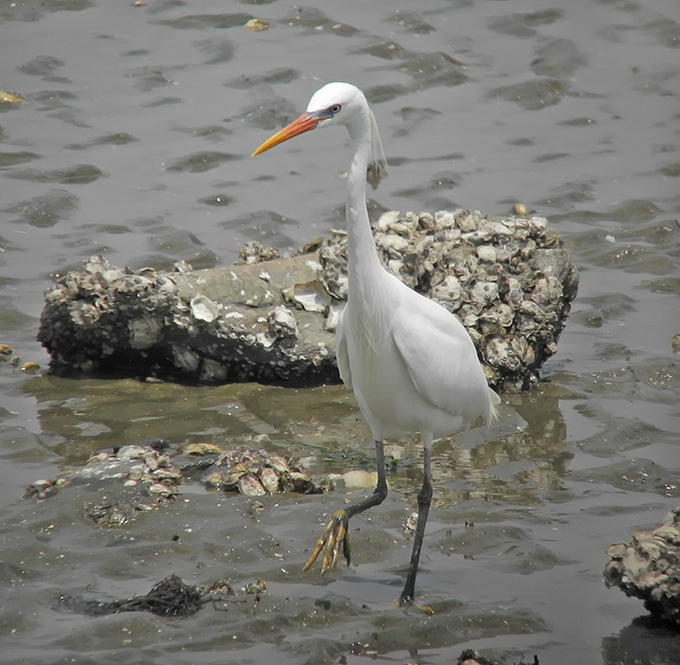 Chinese Egret Egretta eulophotes, Photo © Nial Moores
Chinese Egret Egretta eulophotes, Photo © Nial Moores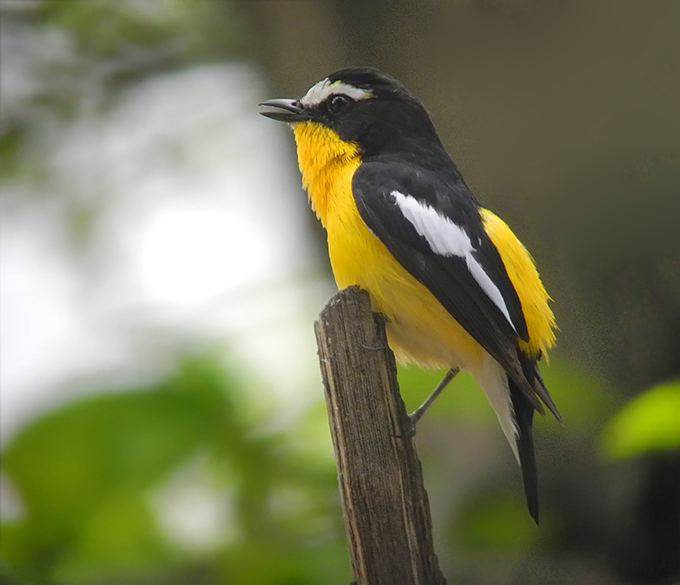 Yellow-rumped Flycatcher Ficedula zanthopygia, Photo © Nial Moores
Yellow-rumped Flycatcher Ficedula zanthopygia, Photo © Nial Moores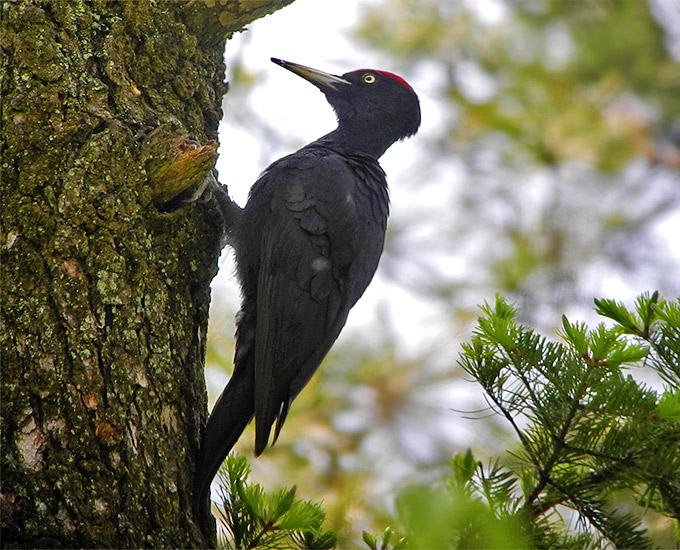 Black Woodpecker Dryocopus martius, Photo © Nial Moores
Black Woodpecker Dryocopus martius, Photo © Nial Moores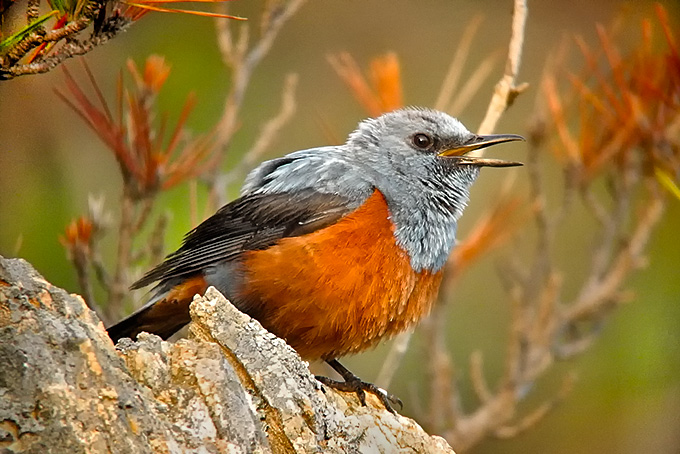 Blue Rock Thrush Monticola solitarius, Photo © Nial MooresBird News from Andreas Kim
Blue Rock Thrush Monticola solitarius, Photo © Nial MooresBird News from Andreas Kim
Mokpo Namhang Urban Wetland, May 15The staging season for Bar-tailed Godwit is slowly coming to an end. A group with green flagged "AFD" which had been here since April 9 was not seen for the last 4 days, while c. 20 Godwits are still around. Instead smaller shorebirds populate the site: 100+ Ruddy Turnstone including two blue flagged individuals from Japan, Dunlin and Red-necked Stint including a white-blue flagged individual from Taiwan seen only one day, c. 40 Grey-tailed Tattler, 30-100 Kentish Plover (the exact number is very uncertain as many have chicks now and hiding in vegetation and only about 30 display on the open mud), 15-25 Whimbrel (varies every day), a handful of Little Ringed Plover, Grey Plover, Common Sandpiper and Terek Sandpiper. Species with small numbers of 1-3 are Mongolian Plover, Curlew Sandpiper, Broad-billed Sandpiper and Far-Eastern Curlew.
Other species always on the site are a few Grey Heron, Black-tailed Gull, still some Black-headed Gull, an uncounted number of Little Tern and in the trees along the site small numbers of Grey-capped Greenfinch and Treesparrows. Permanently cycling over the water of the lagoon areas are Barn Swallows hunting insects.
A very unfortunate discovery was the that the reed-bed at the end of the site was complete cut down, just when the first Oriental Reed Warbler had arrived for nesting; last year 50+ nests. At least 3 were heard this morning. Why does an environmental department of a city government doesn't know about biological cycles and their timings? One only can wonder.
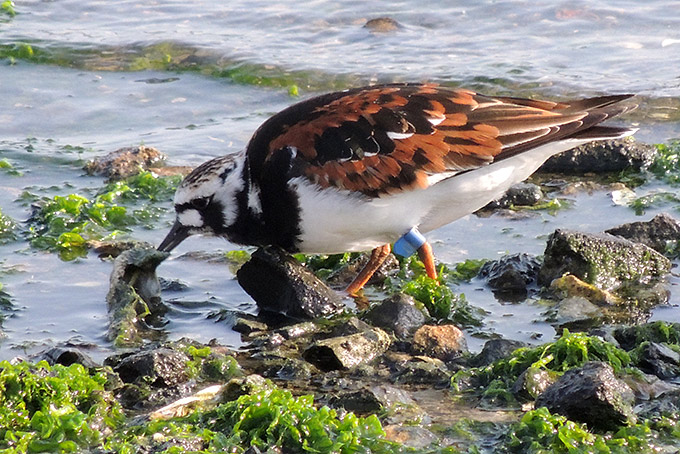 Blue flagged Ruddy Turnstone Arenaria interpres, Photo © Andreas Kim
Blue flagged Ruddy Turnstone Arenaria interpres, Photo © Andreas Kim Red-necked Stint Calidris ruficollis, Photo © Andreas Kim
Red-necked Stint Calidris ruficollis, Photo © Andreas Kim White-blue flagged Red-necked Stint Calidris ruficollis, Photo © Andreas Kim
White-blue flagged Red-necked Stint Calidris ruficollis, Photo © Andreas Kim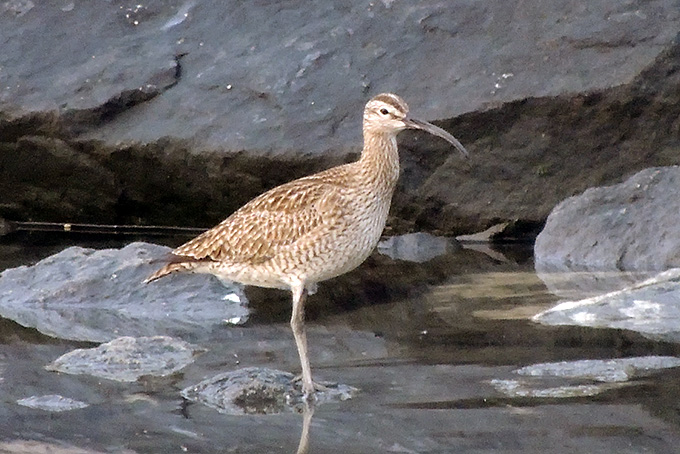 Whimbrel Numenius phaeopus, Photo © Andreas Kim
Whimbrel Numenius phaeopus, Photo © Andreas Kim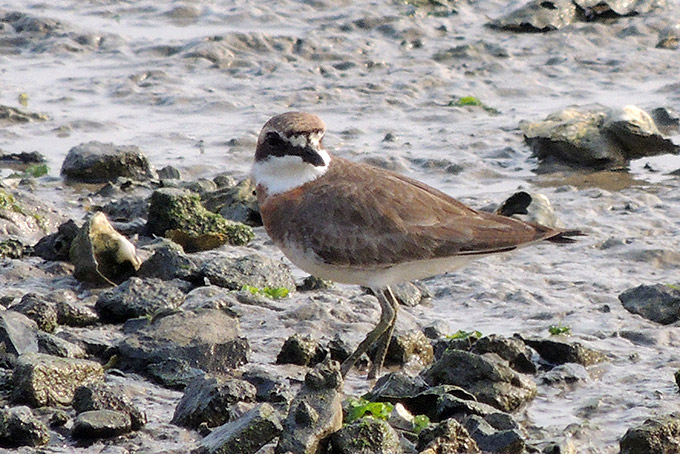 Mongolian Plover Charadrius mongolus, Photo © Andreas Kim
Mongolian Plover Charadrius mongolus, Photo © Andreas Kim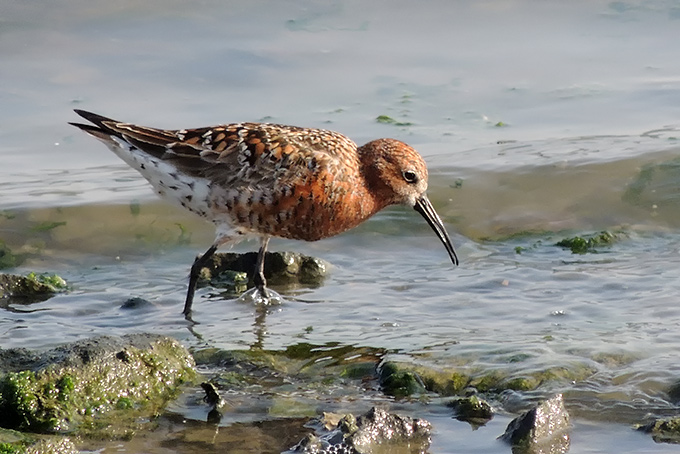 Curlew Sandpiper Calidris ferruginea, Photo © Andreas Kim
Curlew Sandpiper Calidris ferruginea, Photo © Andreas Kim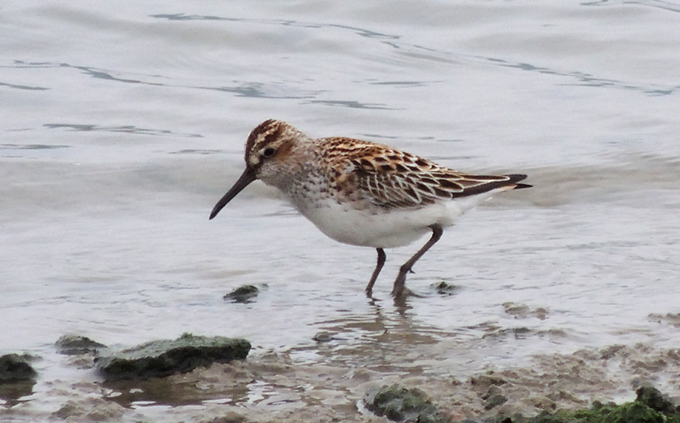 Broad-billed Sandpiper Limicola falcinellus, Photo © Andreas Kim
Broad-billed Sandpiper Limicola falcinellus, Photo © Andreas Kim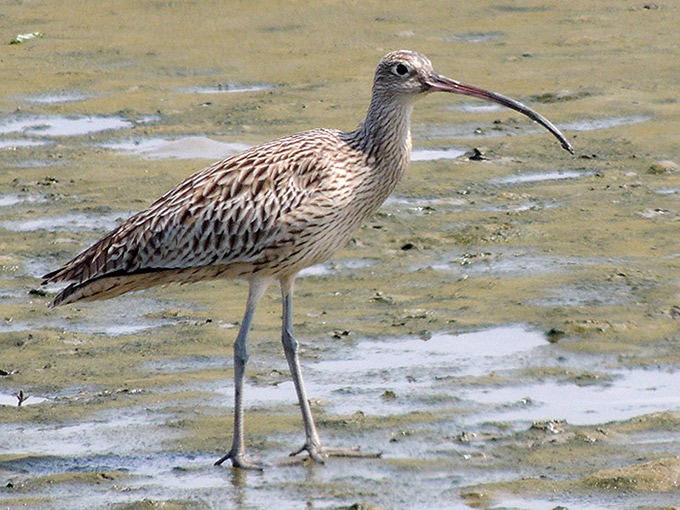 Far-Eastern Curlew Numenius madagascariensis, Photo © Andreas Kim
Far-Eastern Curlew Numenius madagascariensis, Photo © Andreas Kim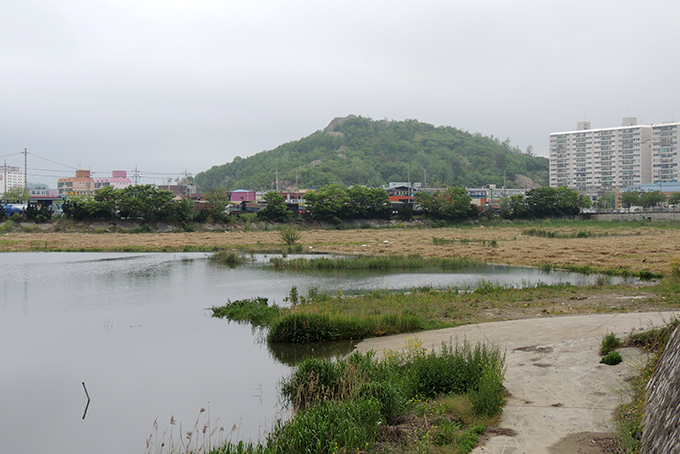 The reed-bed cut down, no nesting option for this summer, Photo © Andreas KimBird News from Jason Loghry
The reed-bed cut down, no nesting option for this summer, Photo © Andreas KimBird News from Jason Loghry
Birdathon 2013: Team Spoony, May 11-12Team Spoony is very happy to report a final count of 140 species as a team on May 11, including 1 Spoon-billed Sandpiper at Geum Estuary! Nial Moores finished with an individual count of 148, Jason Loghry 145, Ha Jung Moon 143, and Bradlee Sulentic 143. We faced a few obstacles because of a heavy fog but luckily it lifted and we were able to pull off a great run. Having finished at Eocheong-do, we were able to spend the next day (and the next because of a boat delay!) birding the island and finding a few more species including Bluethroat, Taiga Flycatcher, Narcissus Flycatcher, Yellow Bunting, and White-breasted Waterhen.
Here are our Birdathon results:
Common Pheasant, Mandarin Duck, Mallard, Eastern Spot-billed Duck, Eurasian Teal, Tufted Duck, Common Shelduck, Arctic Loon, Streaked Shearwater, Short-tailed Shearwater (observed by NM JL HJ), Black-faced Spoonbill, Black-crowned Night Heron, Striated Heron, Chinese Pond Heron, Eastern Cattle Egret, Grey Heron, Great Egret, Intermediate Egret, Little Egret, Temminck’s Cormorant, Grey-faced Buzzard, Common Kestrel, Eurasian Hobby, Peregrine Falcon, Common Moorhen, Eurasian Coot, Far Eastern Oystercatcher, Pacific Golden Plover, Grey Plover, Long-billed Plover, Little Ringed Plover (observed by NM JL BS), Kentish Plover, Mongolian Plover, Pin-tailed Snipe, Black-tailed Godwit, Bar-tailed Godwit, Whimbrel, Eurasian Curlew, Far Eastern Curlew, Spotted Redshank, Common Redshank, Common Greenshank, Green Sandpiper, Wood Sandpiper, Grey-tailed Tattler, Terek Sandpiper, Common Sandpiper, Ruddy Turnstone, Great Knot, Red-necked Stint, Sharp-tailed Sandpiper, Dunlin, Spoon-billed Sandpiper (observed by NM JL HJ), Broad-billed Sandpiper, Ruff (observed by NM), Black-headed Gull, Saunders’s Gull, Black-tailed Gull, Mongolian Gull, Slaty-backed Gull, Heuglin’s Gull, Little Tern, Common Tern, Ancient Murrelet, Oriental Turtle Dove, Indian Cuckoo, Common Cuckoo, Oriental Scops Owl, Northern Boobook, Grey Nightjar, Oriental Dollarbird, Black-capped Kingfisher, Common Kingfisher, Japanese Pygmy Woodpecker, Great Spotted Woodpecker, Grey-headed Woodpecker, White-backed Woodpecker, Bull-headed Shrike, Brown Shrike, Black-naped Oriole, Eurasian Jay, Azure-winged Magpie, Eurasian Magpie, Large-billed Crow, Japanese Waxwing, Marsh Tit, Varied Tit, Coal Tit, Eastern Great Tit, Long-tailed Tit, Vinous-throated Parrotbill, Chinese Penduline Tit, Greater Short-toed Lark, Brown-eared Bulbul, Barn Swallow, Red-rumped Swallow, Asian House Martin, Japanese Bush Warbler, Korean Bush Warbler, Asian Stubtail, Dusky Warbler, Radde’s Warbler (observed by NM JL), Pallas’s Leaf Warbler, Yellow-browed Warbler, Pale-legged Leaf Warbler, Eastern Crowned Warbler, Siberian Chiffchaff (Two observed!), Hume’s Warbler, Oriental Reed Warbler, Red-billed Starling, Grey Thrush, Siberian Thrush, White’s Thrush, Grey-backed Thrush, Eyebrowed Thrush, Pale Thrush, Blue Rock Thrush!), Brown-headed Thrush, Siberian Rubythroat, Red-flanked Bluetail, Rufous-tailed Robin, Siberian Blue Robin, Daurian Redstart, Stejneger’s Stonechat, Chinese Nuthatch (observed by NM), Grey-streaked Flycatcher, Dark-sided Flycatcher, Asian Brown Flycatcher, Mugimaki Flycatcher, Eurasian Tree Sparrow, Eastern Yellow Wagtail, Grey Wagtail, White Wagtail, Richard’s Pipit, Olive-backed Pipit, Red-throated Pipit, Brambling, Hawfinch, Chinese Grosbeak (observed by NM BS HJ), Grey-capped Greenfinch, Eurasian Siskin, Tristram’s Bunting, Little Bunting, Yellow-browed Bunting, Yellow-throated Bunting, Yellow-breasted Bunting, Black-faced Bunting and Meadow Bunting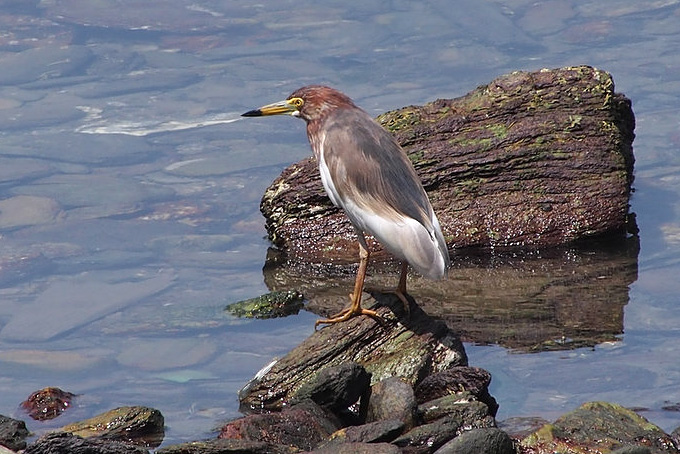 Chinese Pond Heron Ardeola bacchus, Photo © Ha Jung Moon
Chinese Pond Heron Ardeola bacchus, Photo © Ha Jung Moon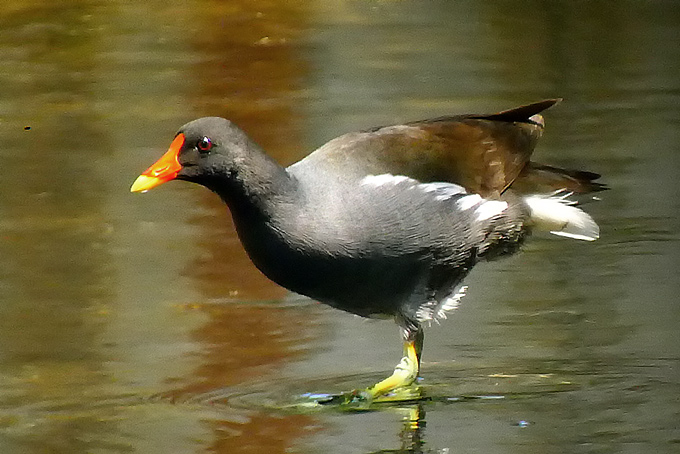 Common Moorhen Gallinula chloropus, Photo © Jason Loghry
Common Moorhen Gallinula chloropus, Photo © Jason Loghry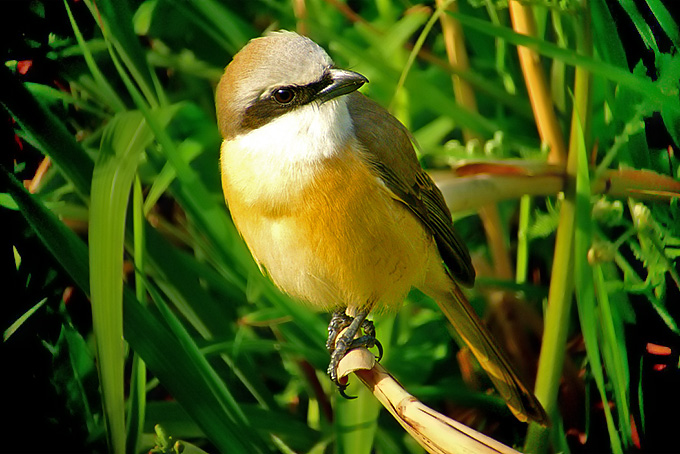 Brown Shrike Lanius cristatus lucionensis, Photo © Jason Loghry
Brown Shrike Lanius cristatus lucionensis, Photo © Jason Loghry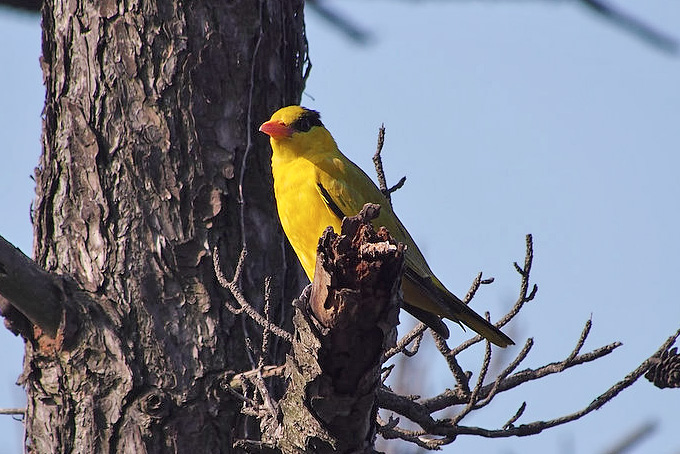 Black-naped Oriole Oriolus chinensis, Photo © Ha Jung Moon
Black-naped Oriole Oriolus chinensis, Photo © Ha Jung Moon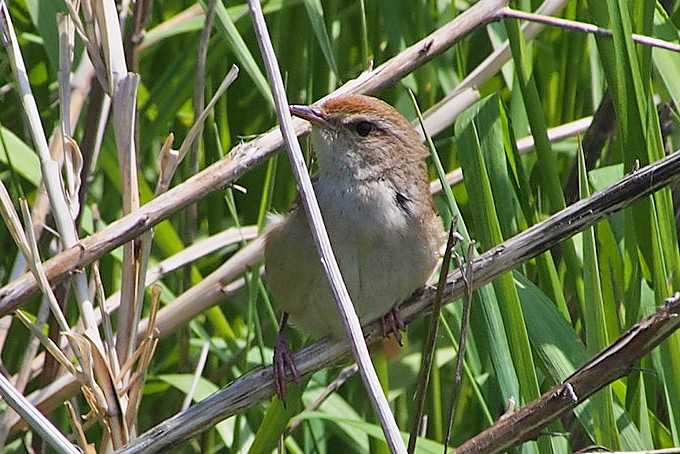 Korean Bush Warbler Cettia (canturians) borealis, Photo © Ha Jung Moon
Korean Bush Warbler Cettia (canturians) borealis, Photo © Ha Jung Moon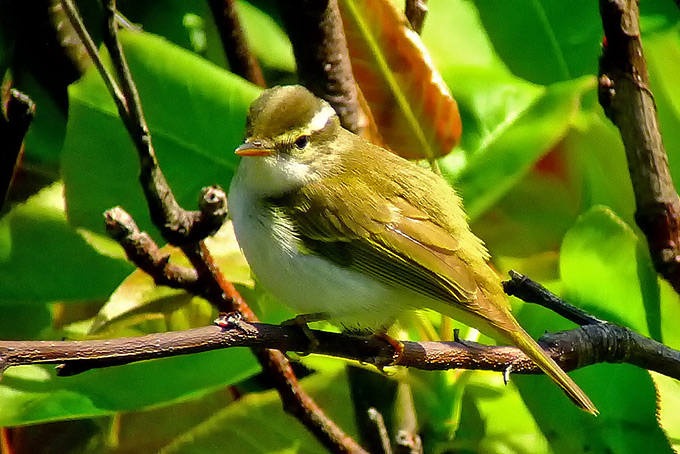 Eastern Crowned Warbler Phylloscopus coronatus, Photo © Jason Loghry
Eastern Crowned Warbler Phylloscopus coronatus, Photo © Jason Loghry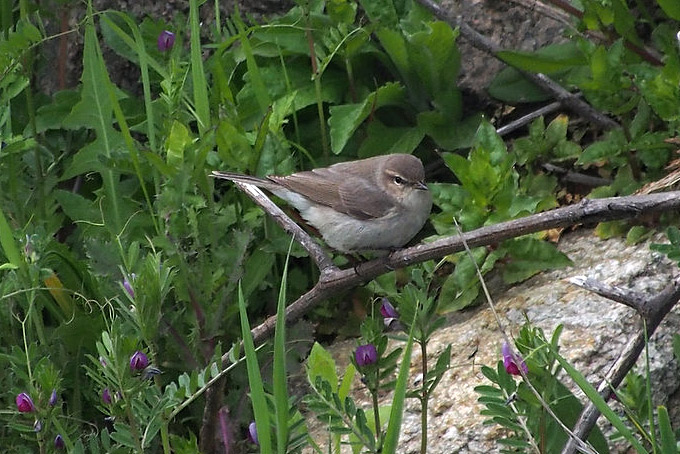 Siberian Chiffchaff Phylloscopus (collybita) tristis, Photo © Ha Jung Moon
Siberian Chiffchaff Phylloscopus (collybita) tristis, Photo © Ha Jung Moon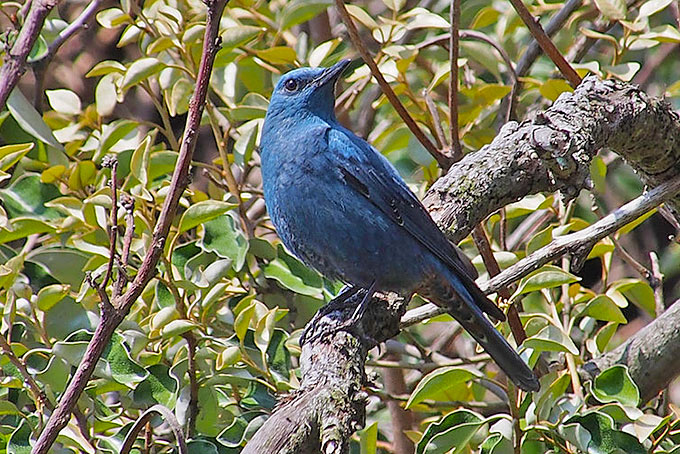 Blue Rock Thrush Monticola solitarius pandoo, Photo © Ha Jung Moon
Blue Rock Thrush Monticola solitarius pandoo, Photo © Ha Jung Moon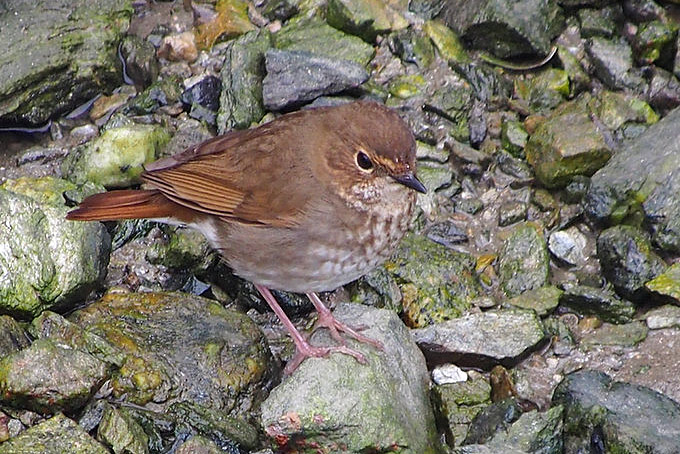 Rufous-tailed Robin Luscinia sibilans, Photo © Ha Jung Moon
Rufous-tailed Robin Luscinia sibilans, Photo © Ha Jung Moon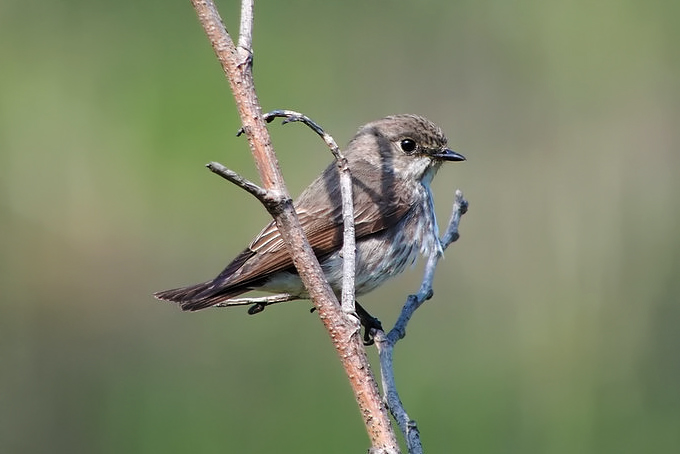 Grey-streaked Flycatcher Muscicapa griseisticta, Photo © Ha Jung Moon
Grey-streaked Flycatcher Muscicapa griseisticta, Photo © Ha Jung Moon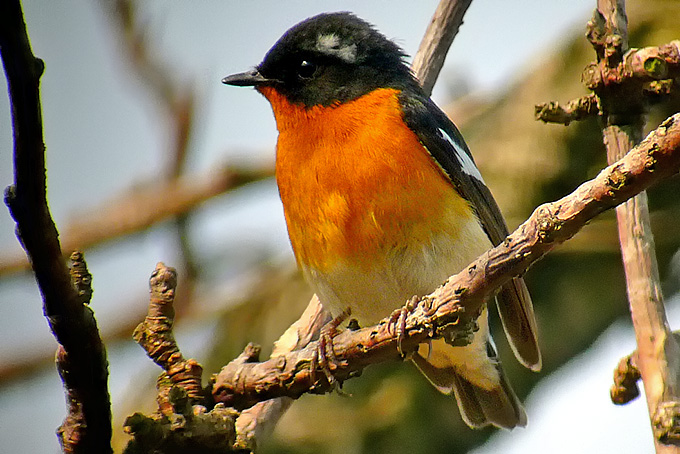 Mugimaki Flycatcher Ficedula mugimaki, Photo © Jason Loghry
Mugimaki Flycatcher Ficedula mugimaki, Photo © Jason Loghry Red-throated Pipit Anthus cervinus, Photo © Ha Jung Moon
Red-throated Pipit Anthus cervinus, Photo © Ha Jung Moon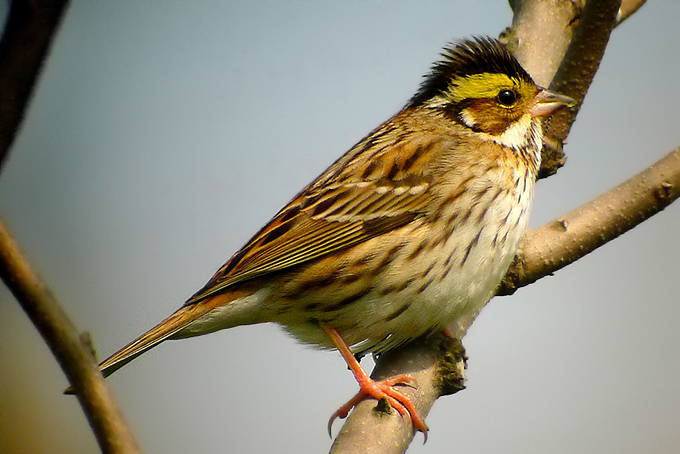 Yellow-browed Bunting Emberiza chrysophrys, Photo © Jason Loghry
Yellow-browed Bunting Emberiza chrysophrys, Photo © Jason Loghry Yellow-breasted Bunting Emberiza aureola, Photo © Ha Jung Moon
Yellow-breasted Bunting Emberiza aureola, Photo © Ha Jung Moon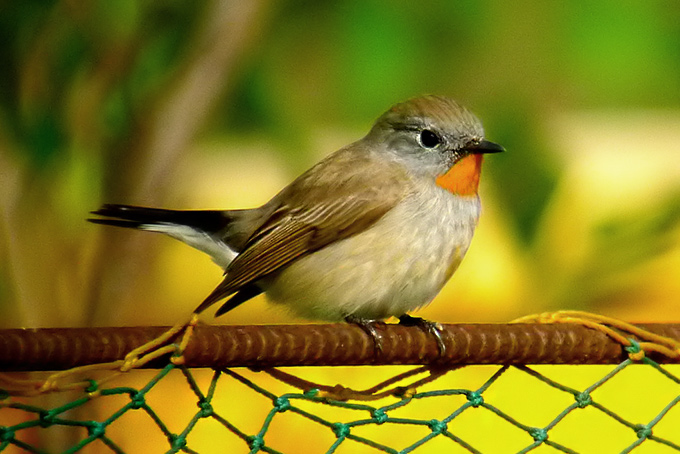 Taiga Flycatcher Ficedula albicilla, Photo © Jason Loghry
Taiga Flycatcher Ficedula albicilla, Photo © Jason Loghry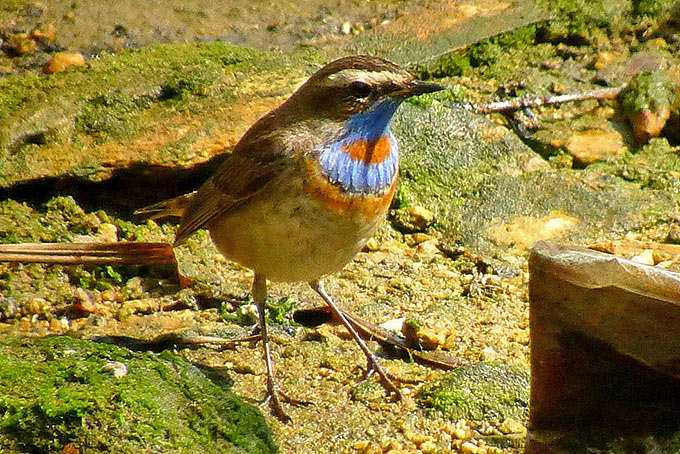 Bluethroat Luscinia svecica, Photo © Jason Loghry
Bluethroat Luscinia svecica, Photo © Jason Loghry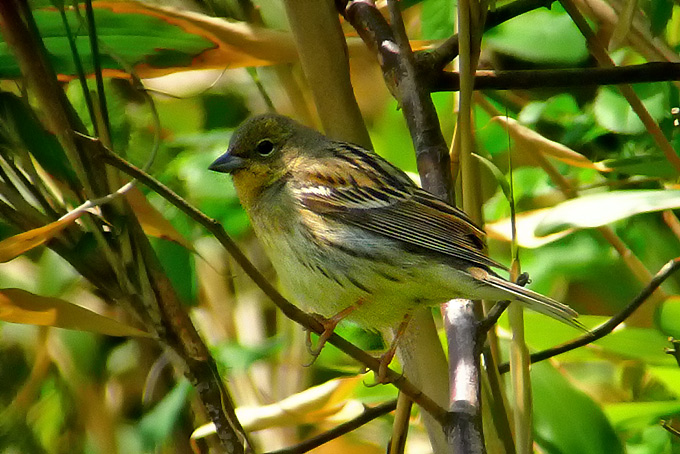 Yellow Bunting Emberiza sulphurata, Photo © Jason LoghryBirdathon Bird News from Matt Poll
Yellow Bunting Emberiza sulphurata, Photo © Jason LoghryBirdathon Bird News from Matt Poll
Gageo Island, May 11Hazy sun and very hot – the long hike to 2-Gu village at midday was probably a bad idea! Some new arrivals like Black-Faced Spoonbill at mossy slab (a Gageo first?), a Black Paradise Flycatcher, Lesser Cuckoo, Goldcrest, as well as at least a dozen new Mugimaki Flycatchers on the way to 2-Gu village, a new arrival of Brown Shrikes, and a sizeable group of Yellow Wagtails at 2-Gu cliffs were good signs of migration on Gageo. I recorded 69 species today which was my second highest total on Gageo, probably a result of yesterday’s drizzle and wind.
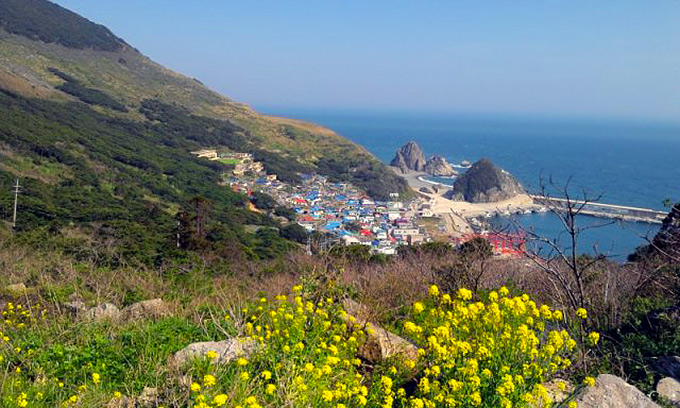 Beautiful Gageo Island, © Matt Poll
Beautiful Gageo Island, © Matt PollBlack-faced Spoonbill – 1 at mossy slab (apparently a Gageo first), Black-crowned Night Heron – 1 exhausted individual near quarry, Chinese Pond Heron – 2 including one still in winter plumage, Eastern Cattle Egret – 8, Grey Heron – 5, Intermediate Egret – 12, Temminck’s Cormorant – 3, Western Osprey – 1 in 1-Gu harbour, Eurasian Sparrowhawk – 1, Peregrine Falcon – 1, Greater Sand Plover – 1 at mossy slab, Latham’s Snipe – 2, Marsh Sandpiper – 1 near quarry, Terek Sandpiper – 1, Common Sandpiper – 3, Black-tailed Gull – 6, Black Wood Pigeon – 2 in hills above 1-Gu, Oriental Turtle Dove – 1, Lesser Cuckoo – 1 heard from 1-Gu hills, Common Cuckoo – 1 heard from 1-Gu hills, Oriental Scops Owl – 1 heard from 1-Gu hills, Pacific Swift – 12 +, Oriental Dollarbird – 3, Black-capped Kingfisher – 1 near trash tip, Ashy Minivet – 5, Brown Shrike – 6 spread out around 1-Gu, probably new in, Japanese Paradise Flycatcher – 1 rufous-mantled male just above 1-Gu village, Eurasian Magpie – 3 around 1-Gu village, Japanese Waxwing – 2 at gully, Varied Tit – 1 on the road to 2-Gu, Light-vented Bulbul – 4, Brown-eared Bulbul – 10, Sand Martin – 1 in 2-Gu, Barn Swallow – 40+, Red-rumped Swallow – 30+, Japanese Bush Warbler – 8 heard, Asian Stubtail – 1, Dusky Warbler – 1, Yellow-browed Warbler – 6, Pale-legged Leaf Warbler – 4, Eastern Crowned Warbler – 4, Oriental Reed Warbler – 4, Japanese White-eye – 6, Goldcrest – 1 at ‘big halfway tree’ on road to 2-Gu, Red-billed Starling – 1, Brown-headed Thrush – 1, Siberian Blue Robin – 1, Rufous-tailed Robin – 2, Stejneger’s Stonechat – 2, Blue Rock Thrush – 4, Grey-streaked Flycatcher – 11, Asian Brown Flycatcher – 20+, Yellow-rumped Flycatcher – 2, Narcissus Flycatcher – 7, Mugimaki Flycatcher – perhaps 12 (males and females) on the road to 2-Gu, probably fresh in, Eastern Yellow Wagtail – 40+, including a group of perhaps 30 at 2-Gu village cliffs, Grey Wagtail – 9, White Wagtail – 3, Richard’s Pipit – 4, Olive-backed Pipit – 5, Red-throated Pipit – 2, Brambling – 1 in 2-Gu, Chinese Grosbeak – 7 around gully, Eurasian Siskin – 65+ including one interestingly marked with a bright orange chin, Tristram’s Bunting – 7, Little Bunting – 3 in 2-Gu, Chestnut Bunting – 1 in 2-Gu, Yellow Bunting – 1 in 2-Gu, Black-faced Bunting – 20+
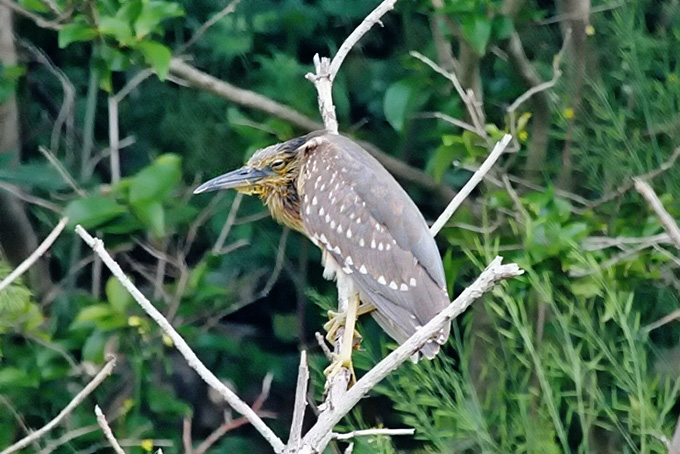 Black-crowned Night Heron Nycticorax nycticorax, Photo © Matt Poll
Black-crowned Night Heron Nycticorax nycticorax, Photo © Matt Poll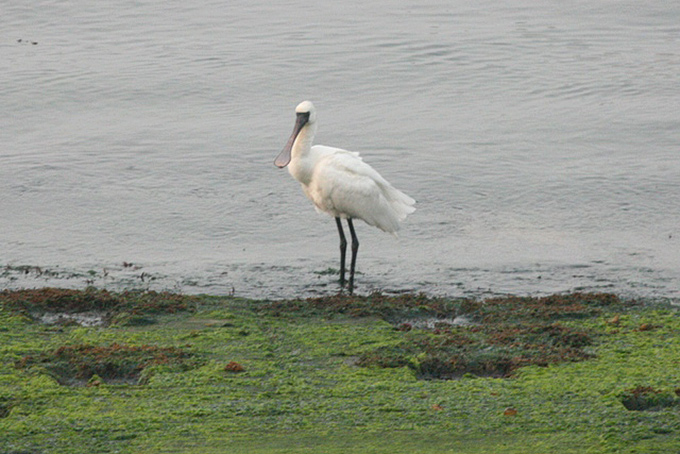 Black-faced Spoonbill Platalea minor, Photo © Matt Poll
Black-faced Spoonbill Platalea minor, Photo © Matt Poll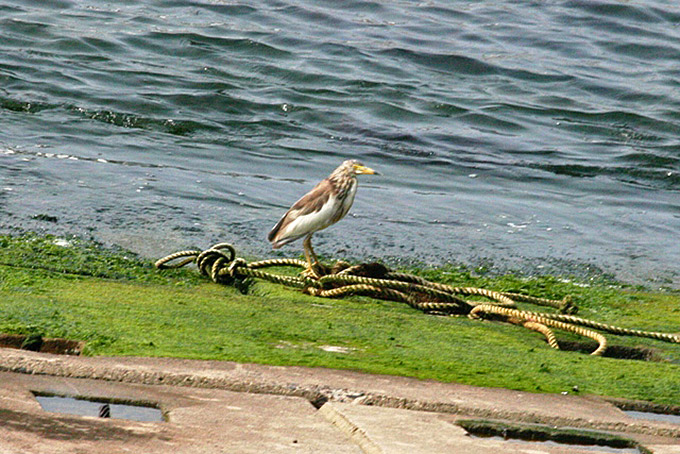 Chinese Pond Heron Ardeola bacchus, Photo © Matt Poll
Chinese Pond Heron Ardeola bacchus, Photo © Matt Poll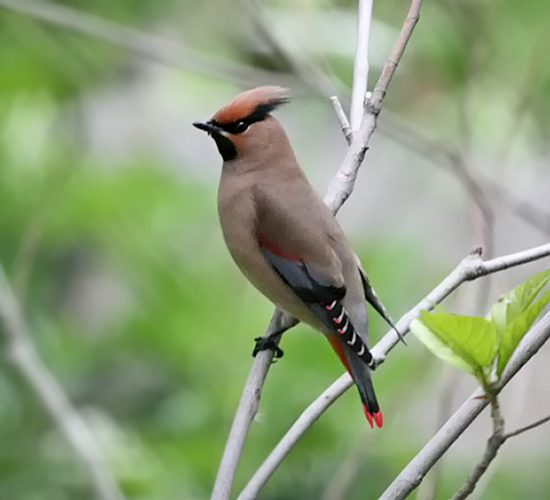 Japanese Waxwing Bombycilla japonica, Photo © Matt Poll
Japanese Waxwing Bombycilla japonica, Photo © Matt Poll Light-vented Bulbul Pycnonotus sinensis, Photo © Matt Poll
Light-vented Bulbul Pycnonotus sinensis, Photo © Matt Poll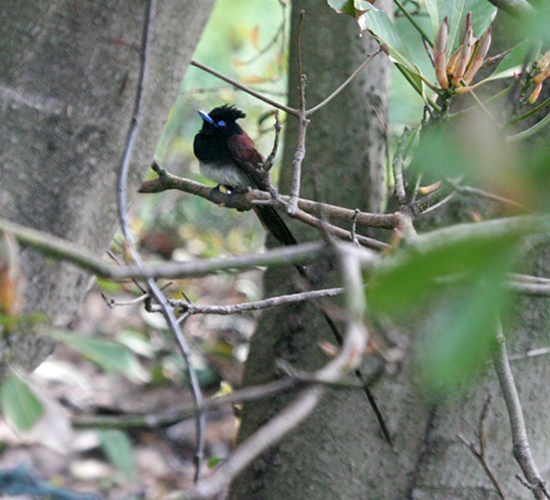 Black Paradise Flycatcher Terpsiphone atrocaudata, Photo © Matt Poll
Black Paradise Flycatcher Terpsiphone atrocaudata, Photo © Matt Poll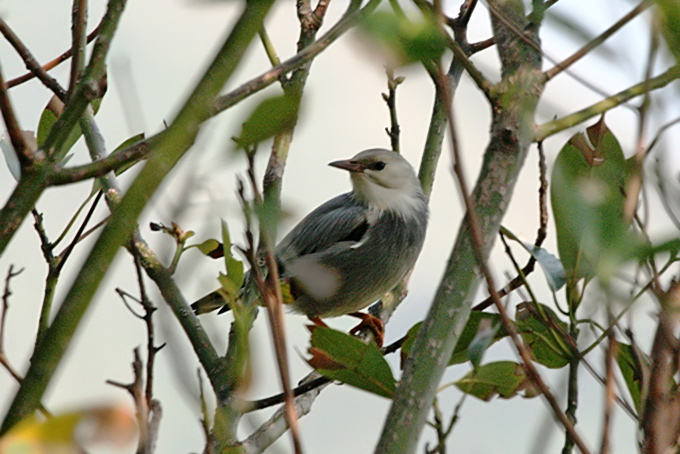 Red-billed Starling Spodiopsar sericeus, Photo © Matt Poll
Red-billed Starling Spodiopsar sericeus, Photo © Matt Poll Tristram’s Bunting Emberiza tristrami, Photo © Matt PollBird News from Matt Poll
Tristram’s Bunting Emberiza tristrami, Photo © Matt PollBird News from Matt Poll
Gageo Island, May 9On May 9th I spotted and photographed an odd-looking minivet that looked good for a Ryukyu Minivet. After having the images looked at by several experts with experience of the species in Japan, the bird was confirmed as a male Ryukyu Minivet, which would make it (possibly?) the first properly documented sighting for this species in the ROK. The bird was re-sighted and photographed on May 12th by several other birders.
 Ryukyu Minivet Pericrocotus tegimae, Photo © Matt PollBird News from Philippe Malenfert
Ryukyu Minivet Pericrocotus tegimae, Photo © Matt PollBird News from Philippe Malenfert
Heuksan Island, April 26 - May 9Detailed information is in the Trip Report: Heuksan Island, April 26 - May 9 2013.
Bird News from Nial Moores
Nakdong Estuary, May 7Meeting up with the Nakdong Eco-School team (working full-time in the Nakdong, at present under the auspices of Birds Korea), took the boat kindly captained by Mr. Jeon Shi-Jin to undertake a shorebird survey. The same areas were covered as in past research (including during the national shorebird survey, on May 13th 2008), with the additional aim of finding Spoon-billed Sandpiper. Unfortunately, habitat here continues to be fragmented and disturbed: construction continues close to and around the estuary, and city-financed “cleaning” activities on the outer islands were obviously causing much disturbance, especially to nesting Little Tern and some shorebirds. No Spoon-billed Sandpipers were found (although apparently three were photographed here a week earlier by Mo In-Ho via Kim Hyang-Ee).
Under hazy blue skies and with moderate easterlies, a total of only 1,491 shorebirds of 16 species were found. The three most numerous were Dunlin (1,160), Sanderling (153) and Red-necked Stint (80). This compares with 2,525 shorebirds counted here in mid-May 2008, with substantially higher numbers of most species recorded during that count (especially Red-necked Stint and Terek Sandpiper), with the exception of Dunlin (1,373) and Sanderling (93). Little Terns, which breed in the estuary in large numbers, were not counted, but Common Terns were – with an estimated 1,100 present (all longipennis). Other species of conservation importance / note included five Black-faced Spoonbill, a Chinese Egret, the personal first Oriental Reed Warbler of the year, and several lingering over-winterers, including three Common Shelduck, two Red-breasted Merganser, a Whooper Swan and a Vega Gull. Outstanding highlight in terms of rarity was a Greater Crested Tern seen (and extremely poorly / perhaps unrecognizably digiscoped) flying west probably 2km offshore (with identification based primarily on the striking upperwing contrast and its bulky size when compared directly with other terns at a similar range). Although the species is still extremely rarely reported in Korean waters, one was also present in Busan in late summer / autumn of 2012 and like most seabird species seems likely to be overlooked.
 Status of Tidal-flats Nakdong, Photo © Nial Moores
Status of Tidal-flats Nakdong, Photo © Nial Moores Boat team, Photo © Nial Moores
Boat team, Photo © Nial Moores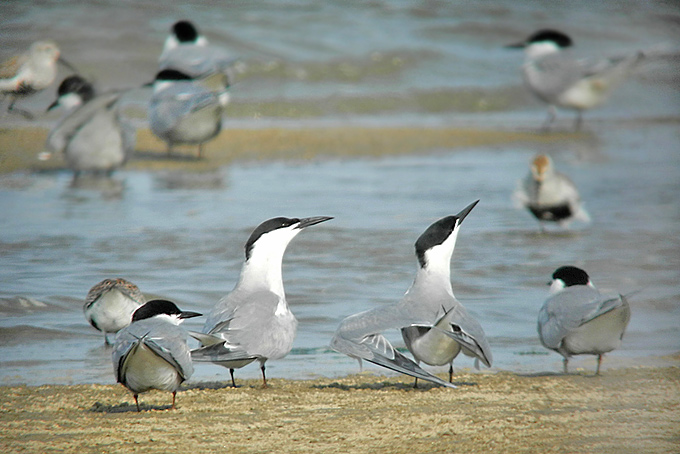 Common Tern Sterna hirundo, Photo © Nial MooresBird News from Subhojit Chakladar
Common Tern Sterna hirundo, Photo © Nial MooresBird News from Subhojit Chakladar
Socheong Island, May 4 - 5A quick weekend trip to Socheong to see what has changed from 2 weekends ago. The weather didn't look “promising” with clear blue skies and gentle northerly winds but there were a few surprises.
The first agricultural plot that I scanned produced an leucistic bunting (?) (most probably a Black-faced Bunting)! Walking around the main village and into the hills just behind, a decent number of birds were found. There were moving flocks of Eye-browed Thrush and large numbers of Yellow-browed and Eastern Crowned Warblers. There were 2 Chinese Blackbirds, a brilliant male Yellow-rumped Flycatcher and the personal first Mugimaki Flycatcher of the spring. A couple of Pale-legged Leaf Warblers were also well seen. While returning towards the main road, a Siberian Thrush flew past and perched on a nearby tree. As I walked along a trail on one of the hillsides, Eurasian Siskins were busy feeding amidst the beautiful wildflowers. Most of the birds (particularly the young ones) were almost oblivious of whats happening around them. So much so that I had to stop walking and start crawling on all four in order to avoid trampling them! There were also significant numbers of Yellow-browed and Tristram's Buntings. Rest of the island however was unusually dull in terms of birds. Raptors included a pair of squabbling Northern Hobby, Oriental Honey Buzzards and Grey-faced Buzzards. Late afternoon, I decided to try my luck at the lighthouse gully and found a rather obliging Siberian Blue Robin and walking back to the village, a rather distant look at the personal first Chestnut Bunting of the year. Right before the village a Blue-and-White Flycatcher was encountered.
Next morning at dawn, birds at the lighthouse gully included a few Siberian Rubythroats, Rufous-tailed Robins, a Light-vented Bulbul. Near the fish farm a group of Chestnut-flanked Whiteyes were spotted. On the road back to the main village, a Taiga Flycatcher was seen for a few moments. Once again a rather dull day (by Socheong standards). 24 hours on the island yielded 62 confirmed species of birds based on visual observation only.
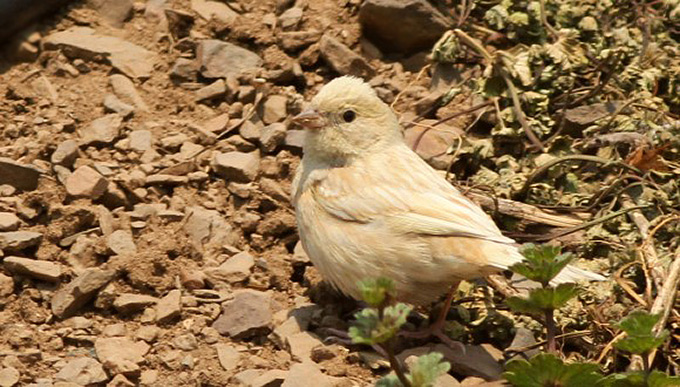 Leucistic Bunting (?), Photo © Subhojit Chakladar
Leucistic Bunting (?), Photo © Subhojit Chakladar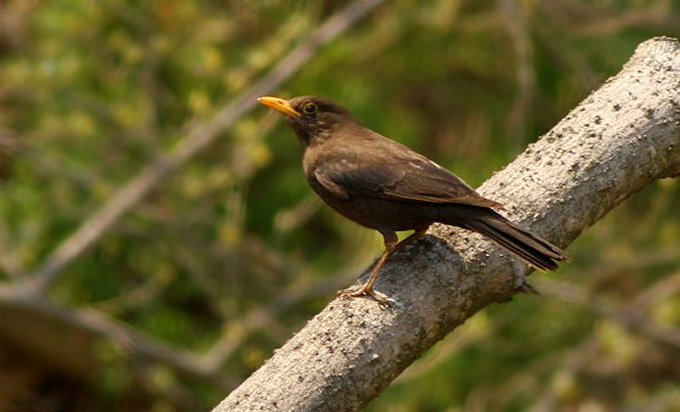 Chinese Blackbird Turdus mandarinus, Photo © Subhojit Chakladar
Chinese Blackbird Turdus mandarinus, Photo © Subhojit Chakladar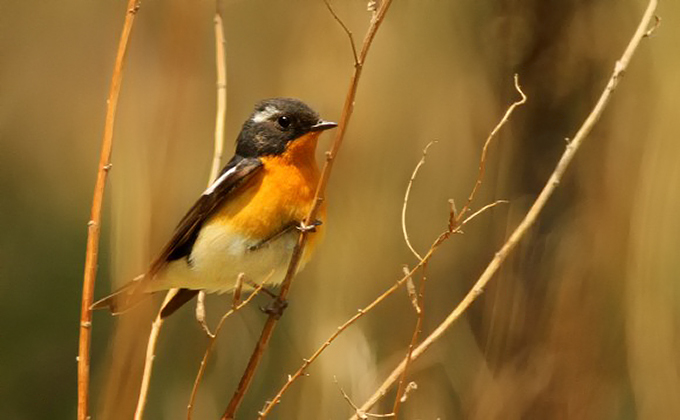 Mugimaki Flycatcher Ficedula mugimaki, Photo © Subhojit Chakladar
Mugimaki Flycatcher Ficedula mugimaki, Photo © Subhojit Chakladar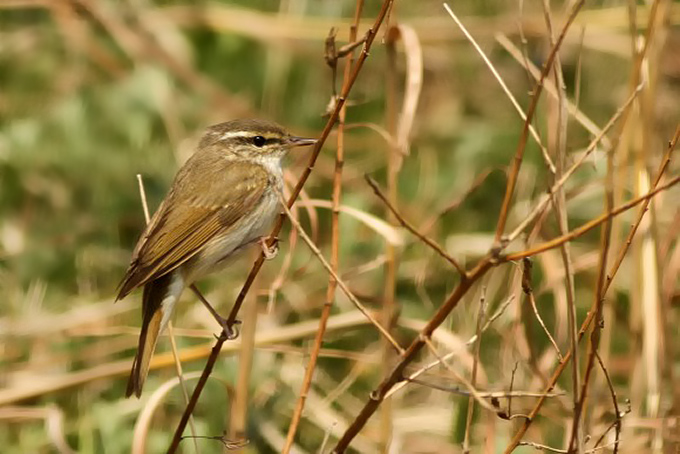 Pale-legged Leaf Warbler Phylloscopus tenellipus, Photo © Subhojit Chakladar
Pale-legged Leaf Warbler Phylloscopus tenellipus, Photo © Subhojit Chakladar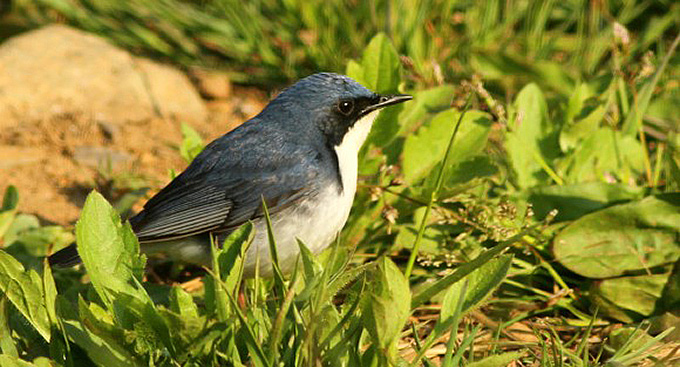 Siberian Blue Robin Luscinia cyane, Photo © Subhojit Chakladar
Siberian Blue Robin Luscinia cyane, Photo © Subhojit Chakladar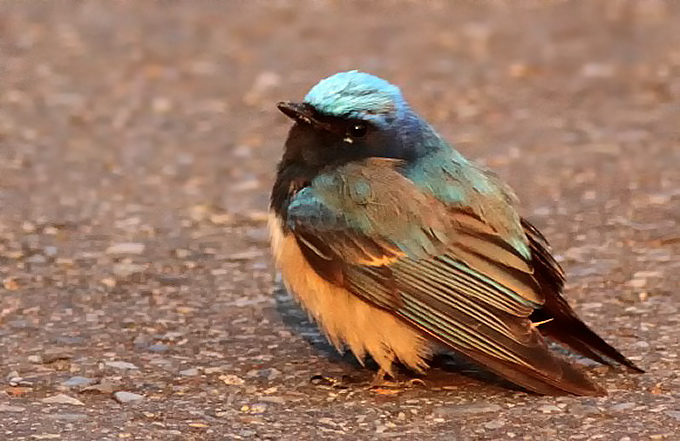 Blue-and-White Flycatcher Cyanoptila cyanomelana, Photo © Subhojit ChakladarBird News fromRobin Newlin
Blue-and-White Flycatcher Cyanoptila cyanomelana, Photo © Subhojit ChakladarBird News fromRobin Newlin
Gageo Island, April 28 - May 4 (an appendix to Matt Poll’s report)Personal highlights only for Gageo, given the above, and the boat trip back:
From the boat (was very kindly allowed to watch from the bridge):
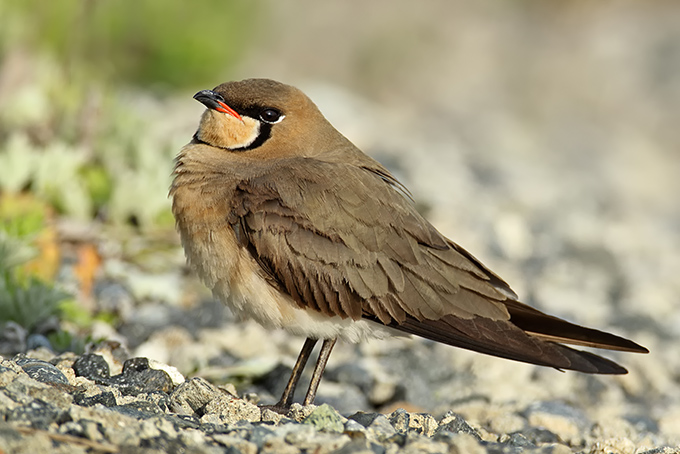 Oriental Pratincole Glareola maldivarum, © Robin Newlin
Oriental Pratincole Glareola maldivarum, © Robin Newlin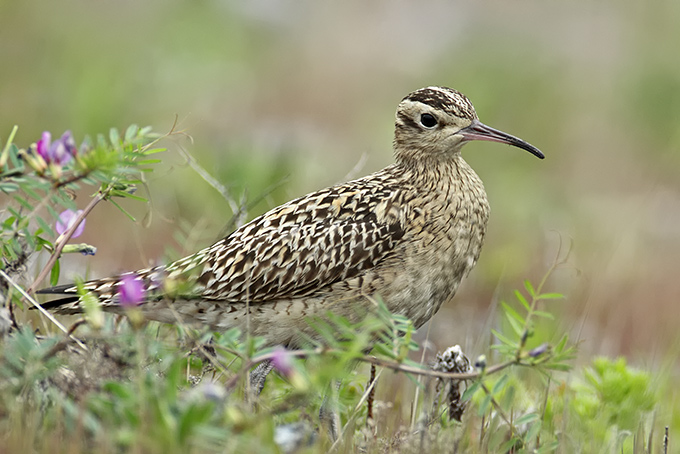 Little Whimbrel Numenius minutus, © Robin Newlin
Little Whimbrel Numenius minutus, © Robin Newlin Oriental Plover Charadrius veredus, © Robin Newlin
Oriental Plover Charadrius veredus, © Robin Newlin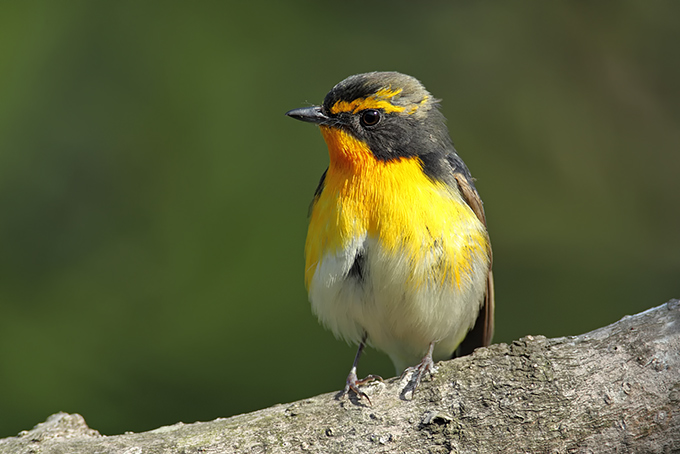 Narcissus Flycatcher Ficedula narcissina, © Robin Newlin
Narcissus Flycatcher Ficedula narcissina, © Robin Newlin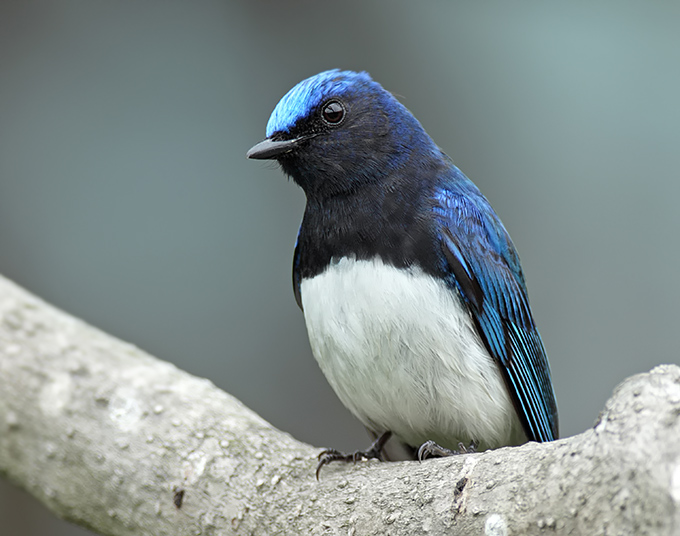 Blue-and-white Flycatcher Cyanoptila cyanomelana, © Robin Newlin
Blue-and-white Flycatcher Cyanoptila cyanomelana, © Robin Newlin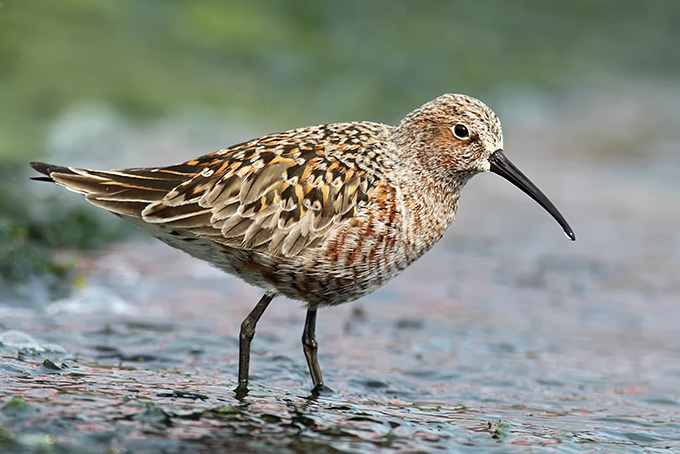 Curlew Sandpiper Calidris ferruginea, © Robin Newlin
Curlew Sandpiper Calidris ferruginea, © Robin Newlin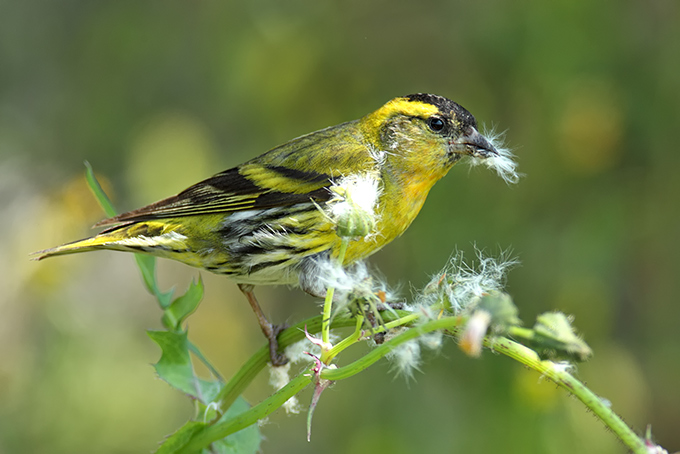 Eurasian Siskin Carduelis spinus, © Robin NewlinBird News from Matt Poll and Robin Newlin
Eurasian Siskin Carduelis spinus, © Robin NewlinBird News from Matt Poll and Robin Newlin
Gageo Island, April 29 - May 4It’s been an amazing week and a half on Gageo, and it was great to bird with the inimitable Robin Newlin again. I’ve learned a lot from him over the past week, and from my mistakes as well – Gageo in spring can be an overwhelming place fresh off the boat!
The variety of migrants has been wonderful – 7 species of wagtail and pipit, 8 species of thrush, 7 species of flycatcher, and 10 (perhaps 11…) species of bunting have given us a lot to look at and take in. Highlights have come in the form of Black Redstart (one male at the trash tip April 26-28, one female in 1-gu village May 2), White-breasted Waterhen (one at the ravine April 26), Oriental Plover (one in the quarry April 29), Grey-headed Lapwing (two in the fields above the ravine April 29-May 2), and White-shouldered Starling (May 6 in the same fields). Also of note was a female Yellow-bellied Tit seen by Robin Newlin in the fields above the ravine on May 2.
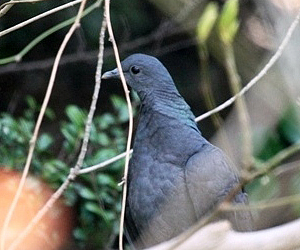 Black Woodpigeon Columba janthina, Photo © Matt Poll
Black Woodpigeon Columba janthina, Photo © Matt PollPersonal highlights have included long-awaited Chinese Blackbird (at the ravine May 1) and Black-capped Kingfisher (May 4), and daily views of such species as Siberian Rubythroat, Siberian Blue Robin, Narcissus Flycatcher, Japanese Yellow Bunting, and roiling flocks of shreeping and confiding Ashy Minivet.
The weather was rainy when I got here, leading to the largest species count (72) the next day, but since then it’s been unfortunately quite sunny and calm, with relatively few new birds in lately. Hopefully the rains forecast for the end of the week will dump some migrants on this charming little island. Over the past several days I noticed some Grey Heron, Intermediate Egret, Cattle Egret, and Chinese Grosbeak coming in off the sea, and there were some new and exhausted Black-Crowned Night Heron around. Perhaps the strong-flying vanguard of an impending fall of migrants? There was a rufous-tailed feeling to Sunday’s new arrivals, with Rufous-tailed Robin and Tristram’s Bunting being suddenly widespread.
I’ve been keeping detailed daily counts, and I’ll post these along with any other highlights at the end of my Gageo sojurn.
Species counts April 25-May 5: 48, 72, 64, 54, 47, 58, 50, 50, 42, 62, 57 (Gageo total: 111)
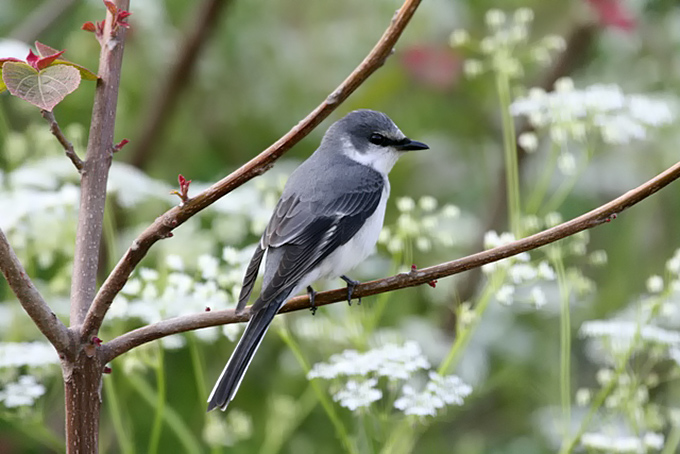 Ashy Minivet Pericrocotus divaricatus, Photo © Matt Poll
Ashy Minivet Pericrocotus divaricatus, Photo © Matt Poll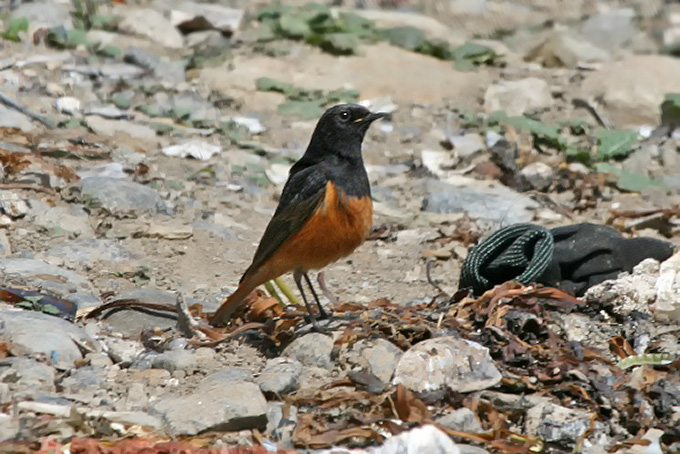 Male Black Redstart Phoenicurus ochruros, Photo © Matt Poll
Male Black Redstart Phoenicurus ochruros, Photo © Matt Poll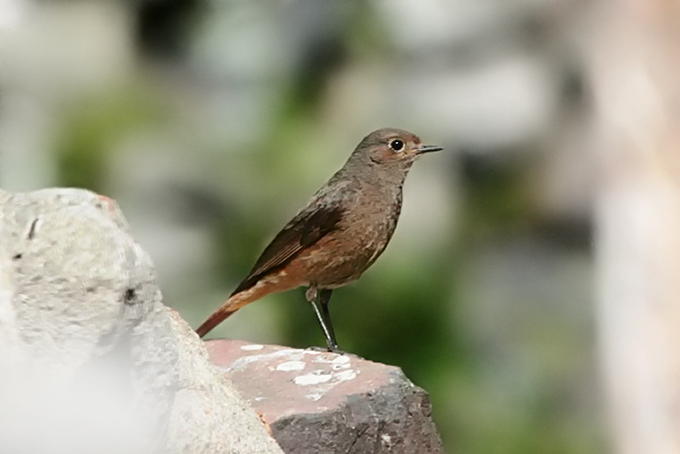 Female Black Redstart Phoenicurus ochruros, Photo © Matt Poll
Female Black Redstart Phoenicurus ochruros, Photo © Matt Poll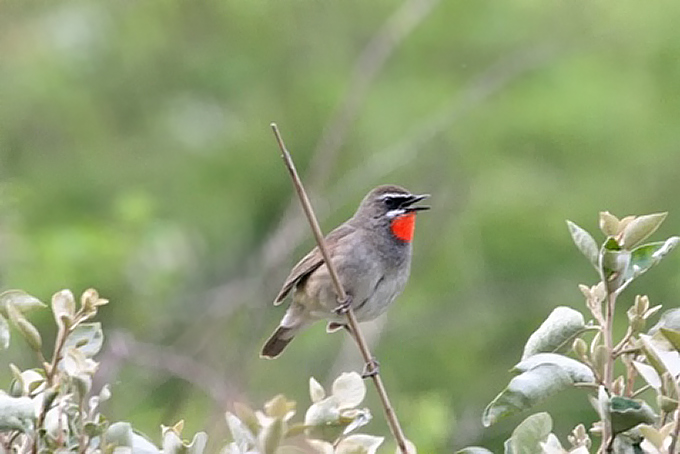 Siberian Rubythroat Luscinia calliope, Photo © Matt Poll
Siberian Rubythroat Luscinia calliope, Photo © Matt Poll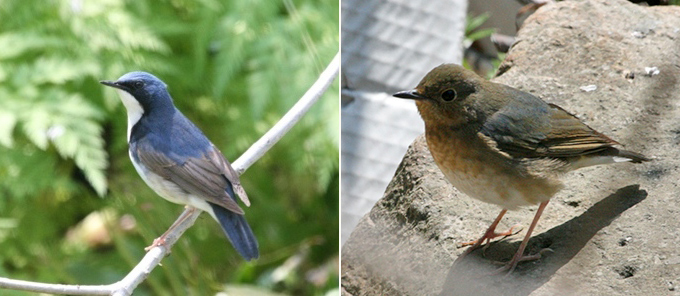 Siberian Blue Robin Luscinia cyane left: male, right: female, Photo © Matt Poll
Siberian Blue Robin Luscinia cyane left: male, right: female, Photo © Matt Poll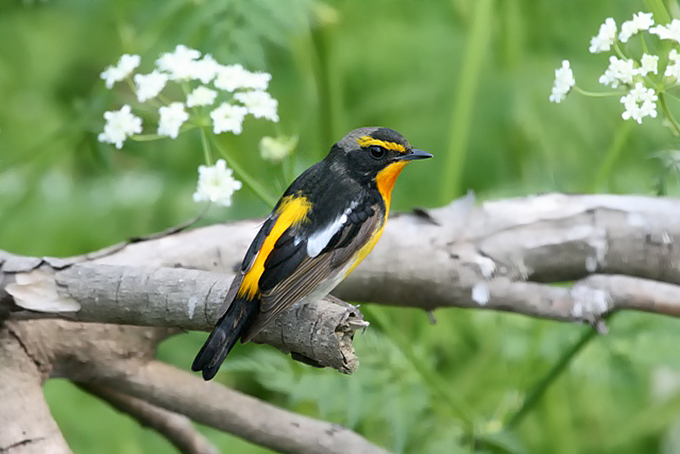 Narcissus Flycatcher Ficedula narcissina, Photo © Matt Poll
Narcissus Flycatcher Ficedula narcissina, Photo © Matt Poll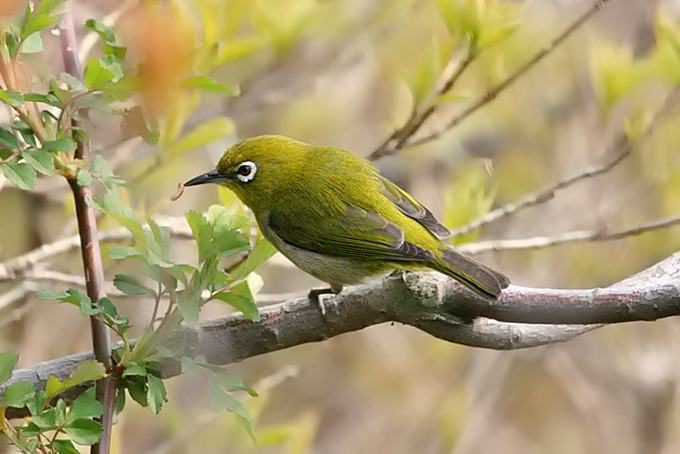 Japanese White Eye Zosterops japonicus, Photo © Matt Poll
Japanese White Eye Zosterops japonicus, Photo © Matt Poll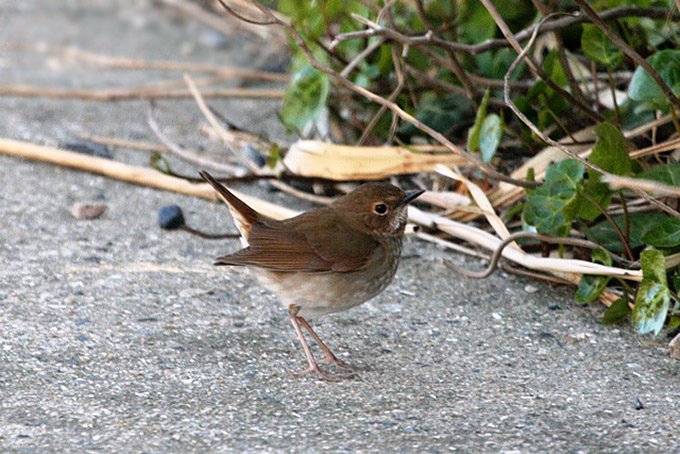 Rufous-tailed-Robin Luscinia sibilans, Photo © Matt Poll
Rufous-tailed-Robin Luscinia sibilans, Photo © Matt Poll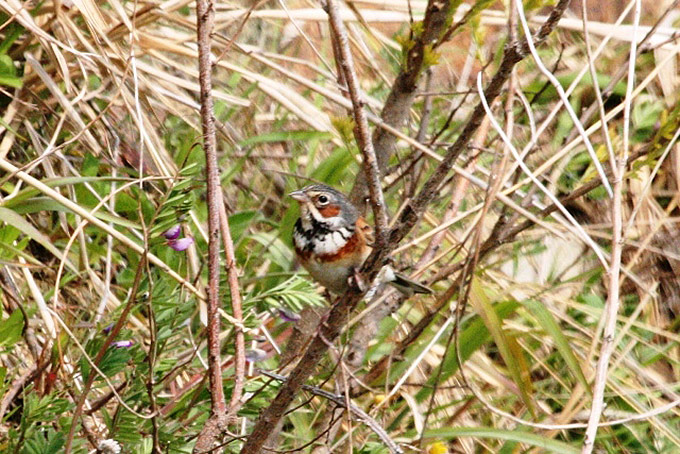 Chestnut-eared Bunting Emberiza fucata, Photo © Matt Poll
Chestnut-eared Bunting Emberiza fucata, Photo © Matt Poll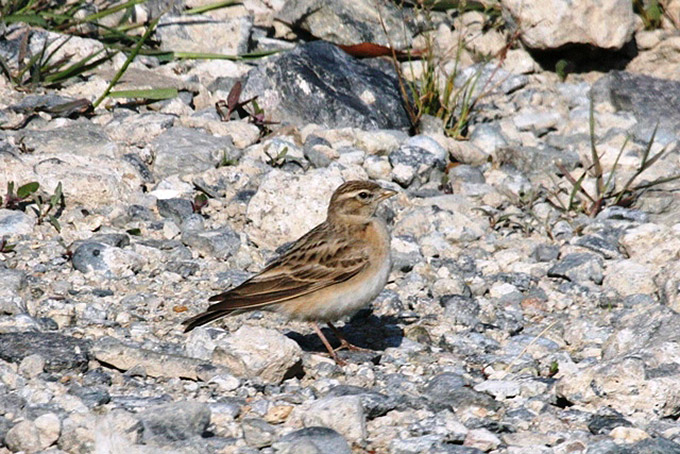 Greater Short-toed Lark Calandrella brachydactyla, Photo © Matt Poll
Greater Short-toed Lark Calandrella brachydactyla, Photo © Matt Poll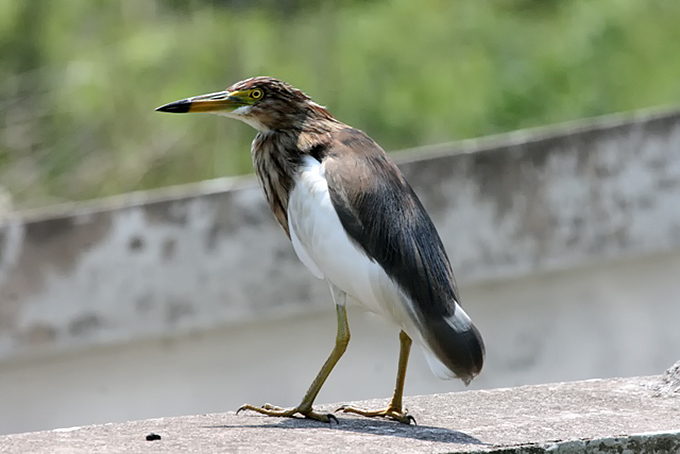 Chinese Pond Heron Ardeola bacchus, Photo © Matt Poll
Chinese Pond Heron Ardeola bacchus, Photo © Matt Poll Sharp-tailed Sandpiper Calidris acuminata, Photo © Matt PollBird News from Nial Moores & Jenny Bowman
Sharp-tailed Sandpiper Calidris acuminata, Photo © Matt PollBird News from Nial Moores & Jenny Bowman
Various Sites, April 27 - May 4Visiting various well-known (and some lesser known) sites mostly in the west and northwest, we encountered a grand total of 190 species heard or seen (with c. 170 recorded by JB) between April 27th and May 4th. Sites visited included Yeongjong and Song Do (Incheon) on 27th; the Geum Estuary and Weiyeon Island on 28th (resulting in 118 species recorded that day); Weiyeon only on 29th & 30th; Weiyeon on the morning of May 1st, followed by Boryeong tidal-flat and the Geum Estuary in the afternoon; the Geum Estuary and Boryeong tidal-flat again early in the morning of the 2nd, followed by a small part of Seosan Lake A; Namhansan Seong near Seoul on 3rd; and forest near the national arboretum and then Cheorwon on 4th. Weather was cool and mostly sunny with occasional fog or haze near the coast, with the exception of a severe thunderstorm (with perhaps >50mm of rain and brief gale-force winds knocking down several trees) at dawn on April 29th. As expected, this system produced some of the highest numbers of grounded landbirds during the period.
Selected highlights included:
 Black-faced Spoonbill nesting island, Photo © Nial Moores
Black-faced Spoonbill nesting island, Photo © Nial Moores Black-faced Spoonbill Platalea minor, Photo © Nial Moores
Black-faced Spoonbill Platalea minor, Photo © Nial Moores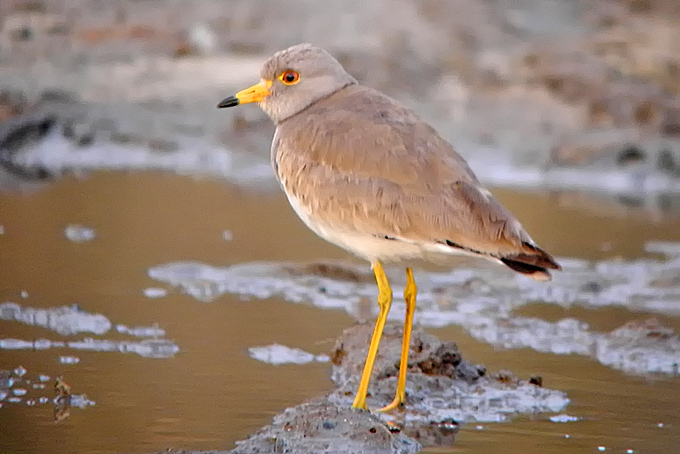 Grey-headed Lapwing Vanellus cinereus, Photo © Nial Moores
Grey-headed Lapwing Vanellus cinereus, Photo © Nial Moores Asian Dowitcher Limnodromus semipalmatus, Photo © Nial Moores
Asian Dowitcher Limnodromus semipalmatus, Photo © Nial Moores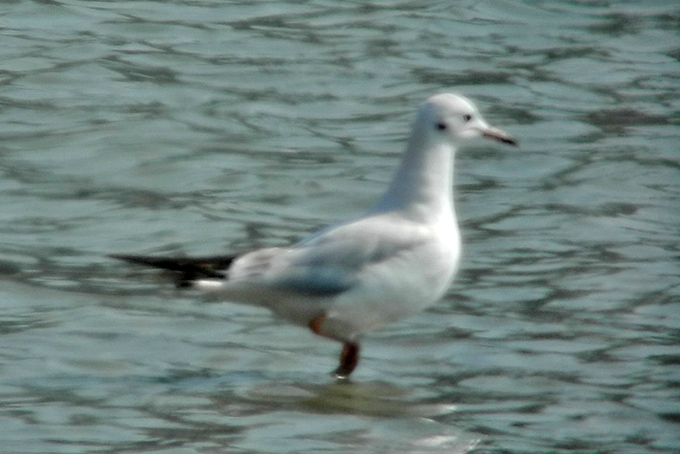 Odd looking gull, Photo © Nial Moores
Odd looking gull, Photo © Nial Moores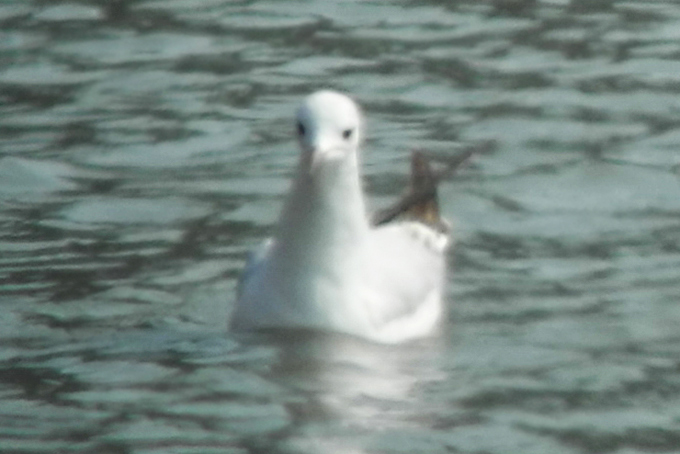 Odd looking gull, Photo © Nial Moores
Odd looking gull, Photo © Nial Moores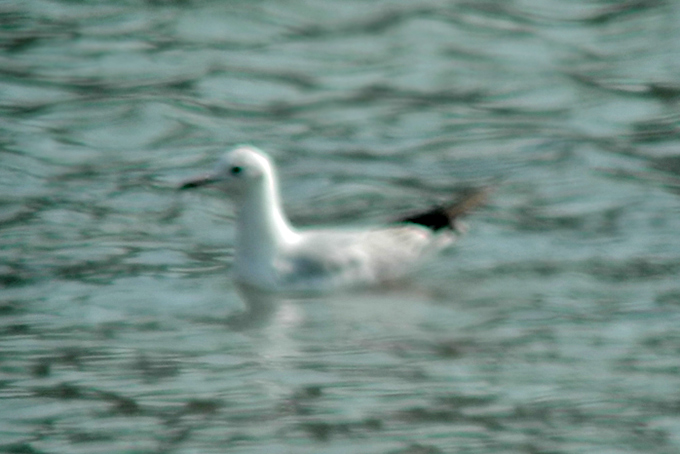 Odd looking gull, Photo © Nial Moores
Odd looking gull, Photo © Nial Moores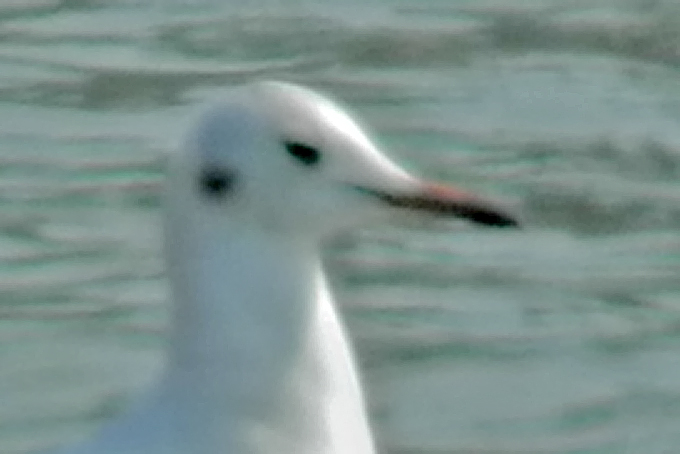 Odd looking gull, Photo © Nial Moores
Odd looking gull, Photo © Nial Moores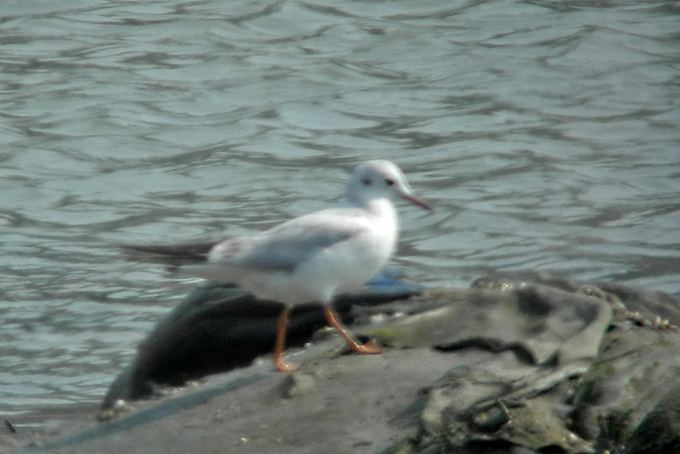 Odd looking gull, Photo © Nial Moores
Odd looking gull, Photo © Nial Moores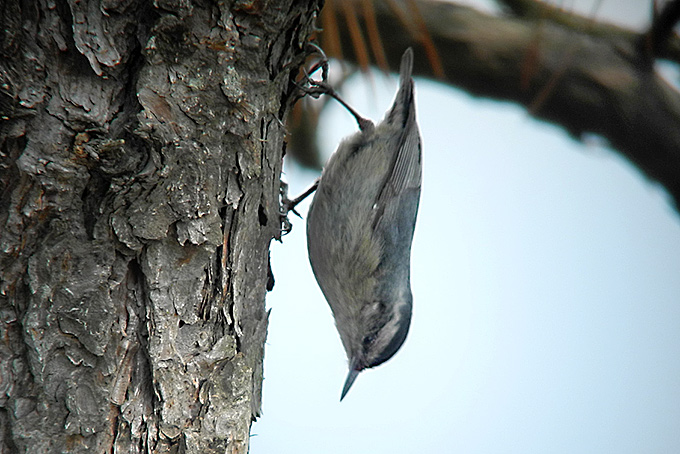 Chinese Nuthatch Sitta villosa, Photo © Nial Moores
Chinese Nuthatch Sitta villosa, Photo © Nial Moores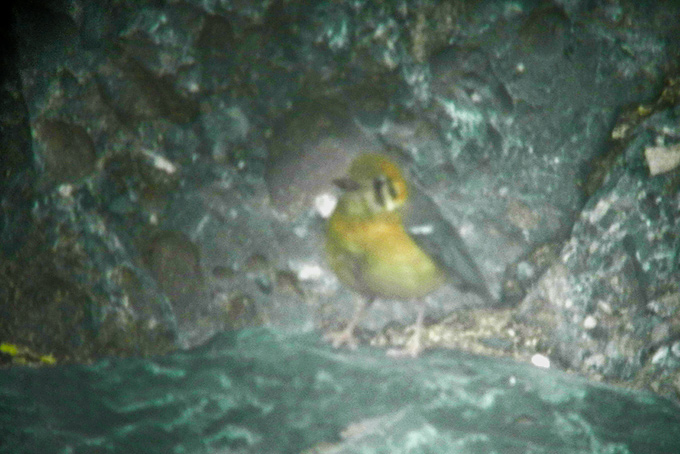 Orange-headed Thrush Geokichla citrina, Photo © Nial Moores
Orange-headed Thrush Geokichla citrina, Photo © Nial Moores Citrine Wagtail Motacilla citreola, Photo © Nial Moores
Citrine Wagtail Motacilla citreola, Photo © Nial Moores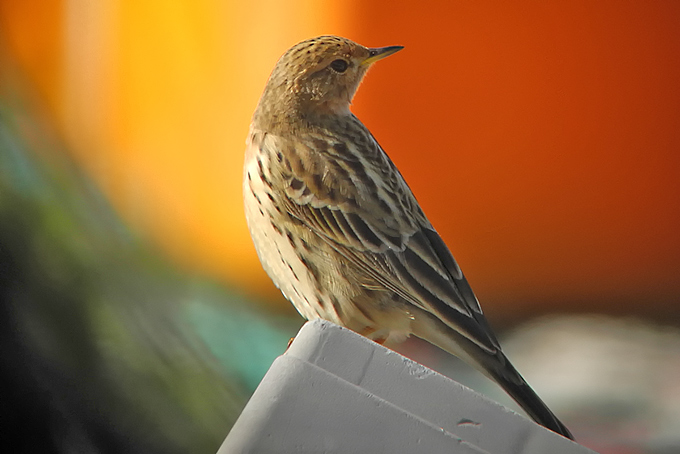 Red-throated Pipit Anthus cervinus, Photo © Nial Moores
Red-throated Pipit Anthus cervinus, Photo © Nial Moores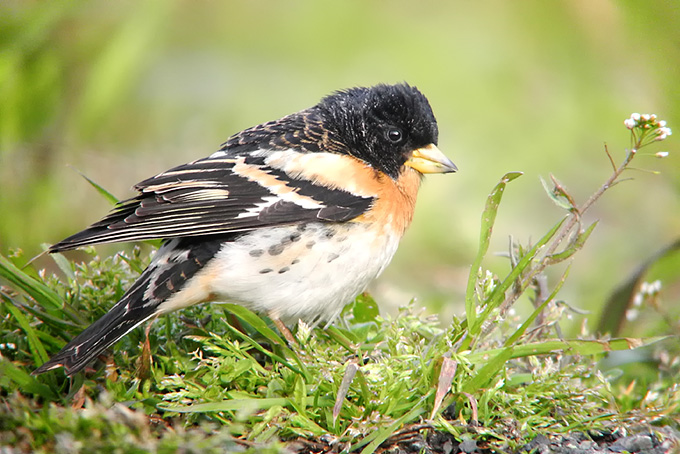 Brambling Fringilla montifringilla, Photo © Nial Moores
Brambling Fringilla montifringilla, Photo © Nial Moores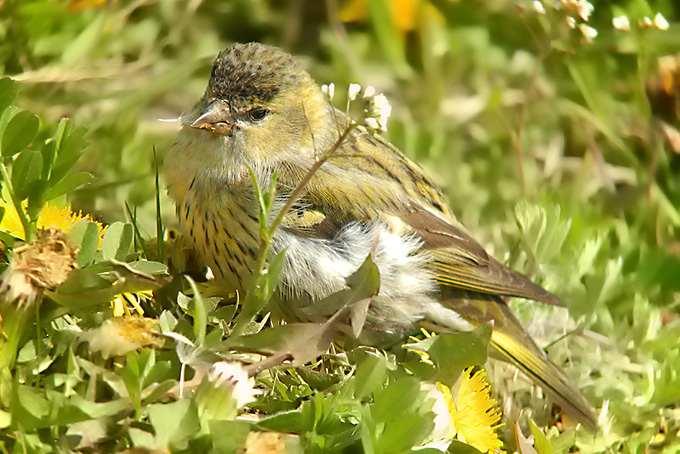 Eurasian Siskin Carduelis spinus, Photo © Nial Moores
Eurasian Siskin Carduelis spinus, Photo © Nial Moores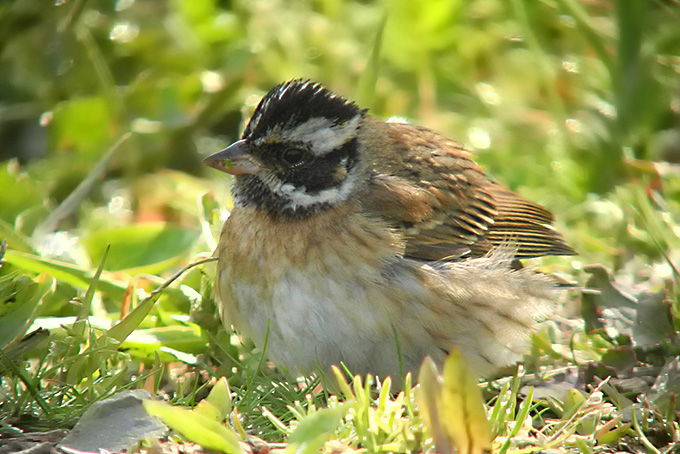 Tristram’s Bunting Emberiza tristrami, Photo © Nial Moores
Tristram’s Bunting Emberiza tristrami, Photo © Nial Moores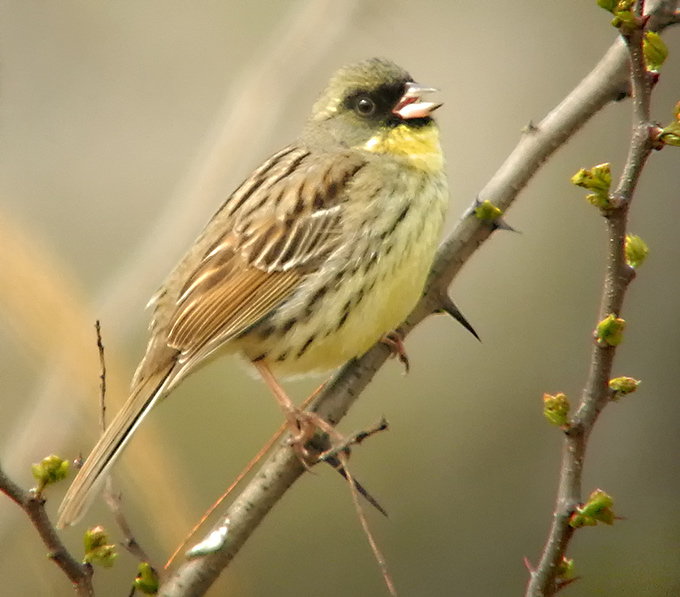 Black-faced Bunting Emberiza spodocephala personata, Photo © Nial MooresBird News from Subhojit Chakladar
Black-faced Bunting Emberiza spodocephala personata, Photo © Nial MooresBird News from Subhojit Chakladar
Deokjeok Island, May 1A quick trip to Deokjeok on Labor Day holiday to check out the status of migration. Starting from about 10:50am to 4pm surveying only a limited part of the island consisting of the hiking trail and some farmlands. A total of 51 species spotted during that period on the island itself. Even though extremely popular with day tourists (with a sense of style and a penchant for brightly colored hiking clothing!), the island offers a good mix of habitat which attracts a good variety of birds. Once the main column of hikers have passed, the trail is usually quiet and productive. The fields are away from the main tourist trail and surprisingly good for species that favor that kind of habitat.
If the past few weeks belonged to thrushes, this was the day of the buntings! 8 species of buntings including the first Yellow-browed, Yellow-bellied and Chestnut-eared Buntings of the spring. The numbers were also quite and the birds were busy feeding in the fields are they are being prepared for the growing season. Yellow-browed Warblers were the most dominant of the birds in terms of numbers along with a few surprisingly approachable Dusky Warblers. 3 species of pipits were seen including the personal first Pechora Pipit of this year. A few Dusky Thrush, 1 White's Thrush and 1 Grey-backed Thrush were also seen. Great and Little Egrets were present along with a couple of Chinese Pond Heron and a Straited Heron. 2 species of raptors were seen – a Peregrine and a Northern Hobby. A male Blue-and-White Flycatcher and a female Yellow-rumped Flycatcher were observed. Under clear blue skies, many of the insect feeders were executing acrobatic maneuvers while feeding. Highlights of the day were a couple of Chinese Nuthatches in the hiking trail and 3 Greater Short-toed Larks in a field near the school.
Copyright 2002 - present http://www.birdskorea.org all rights reserved
Birds Korea 1108 Ho, 3 Dong, Samick Tower Apt., 148-22, Namcheon-Dong, Su-Young-Gu
Busan, 618-762 Republic of Korea





